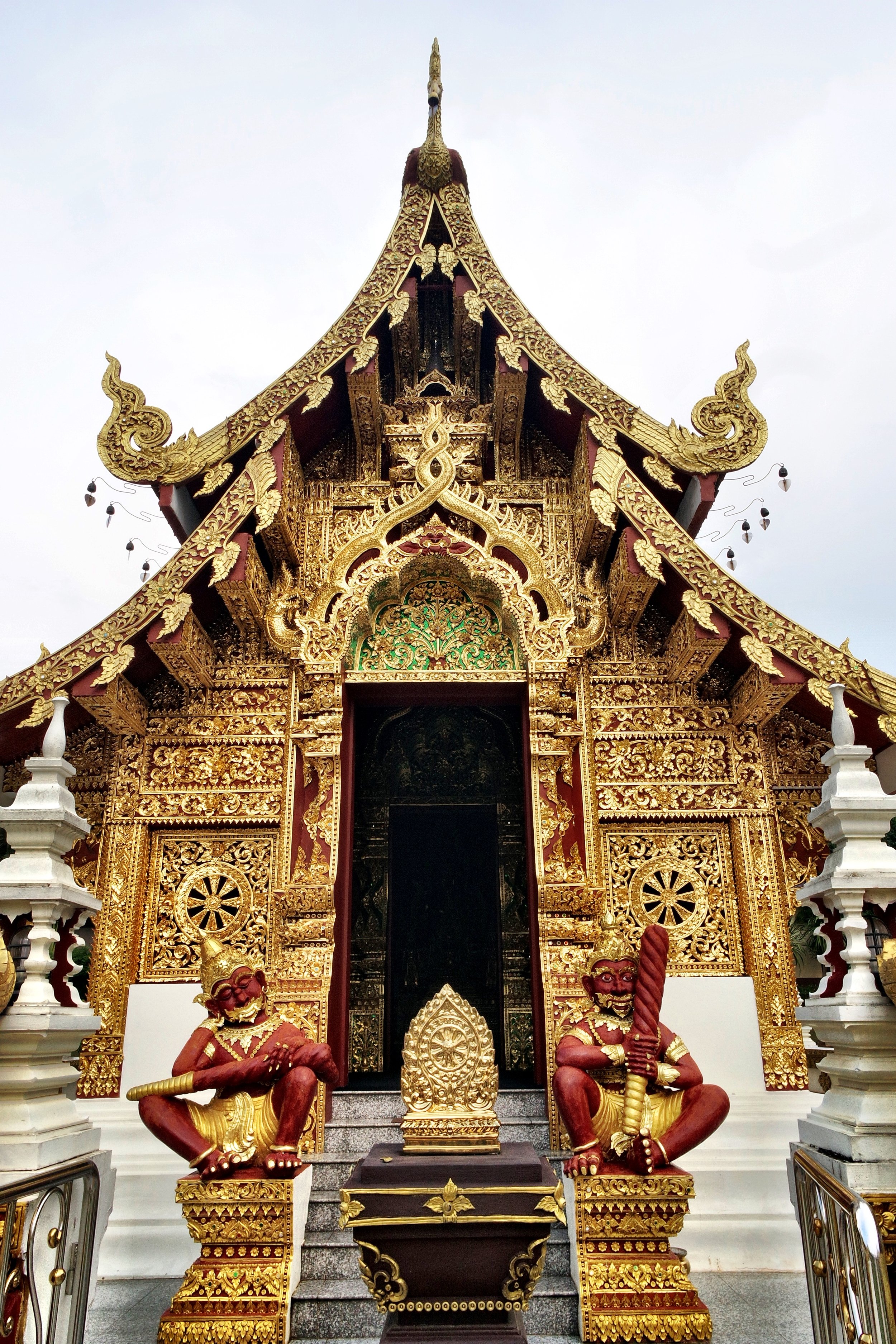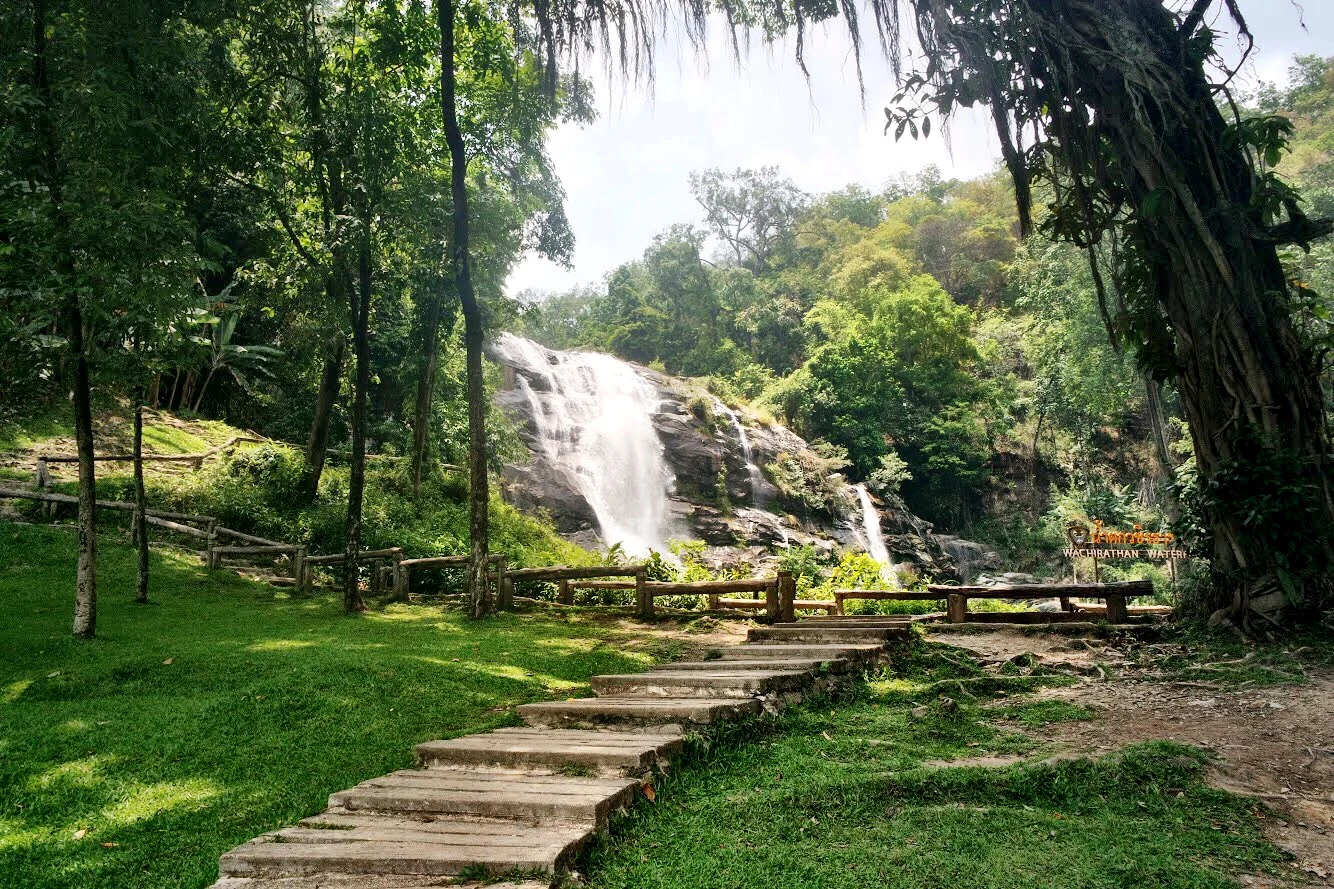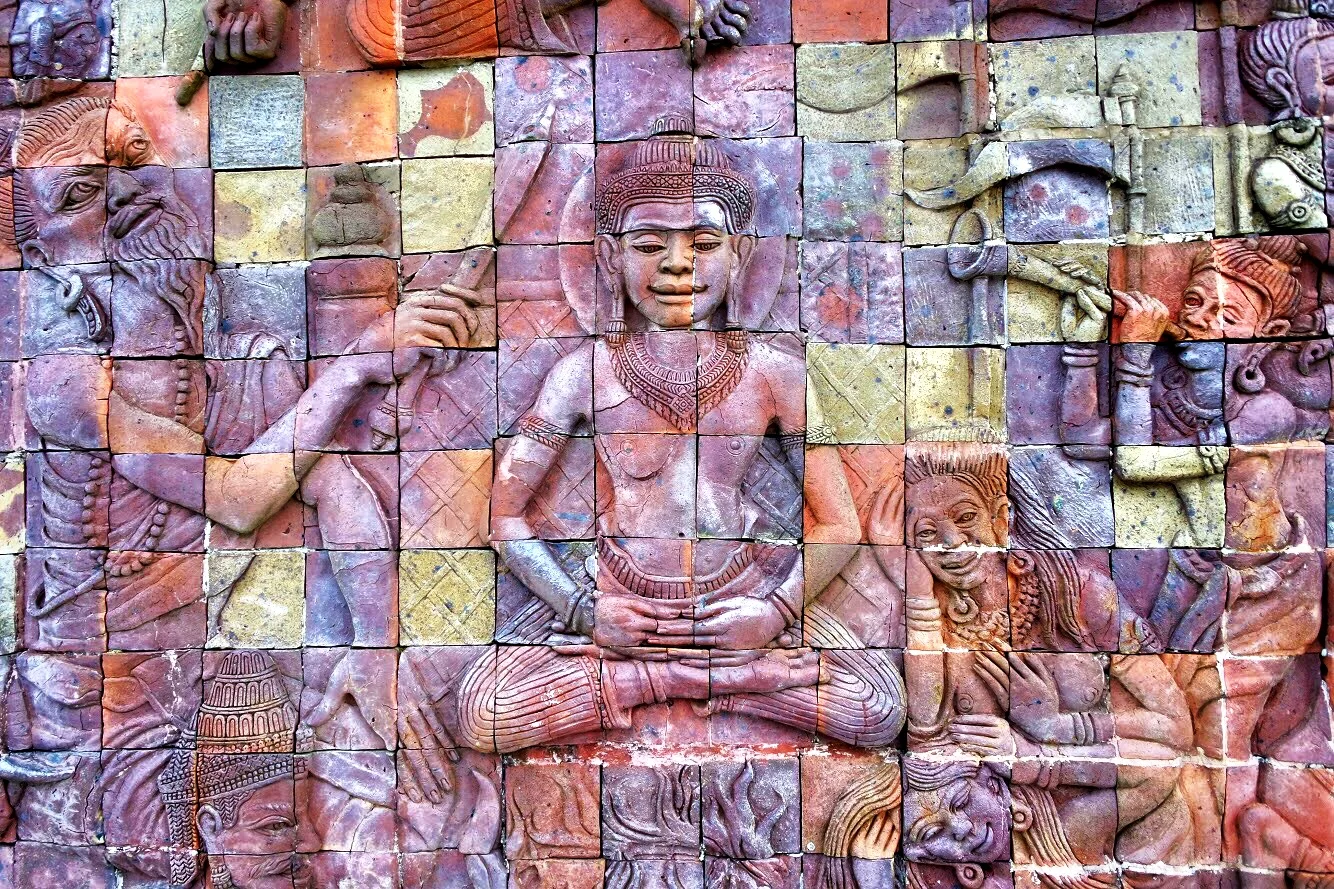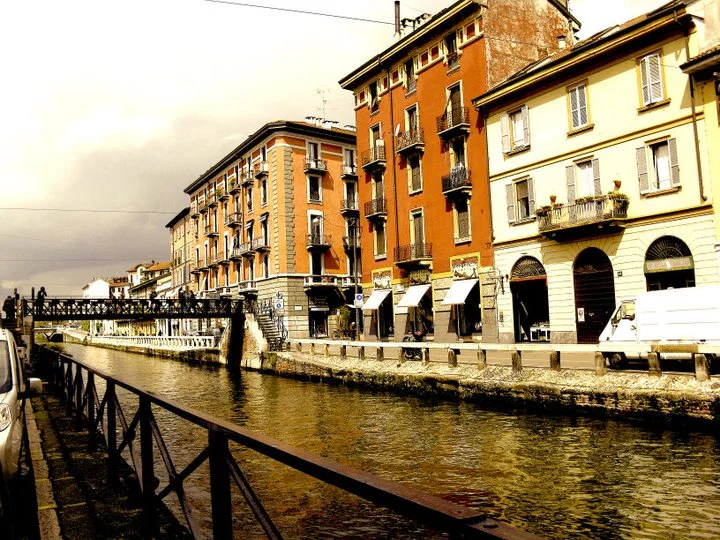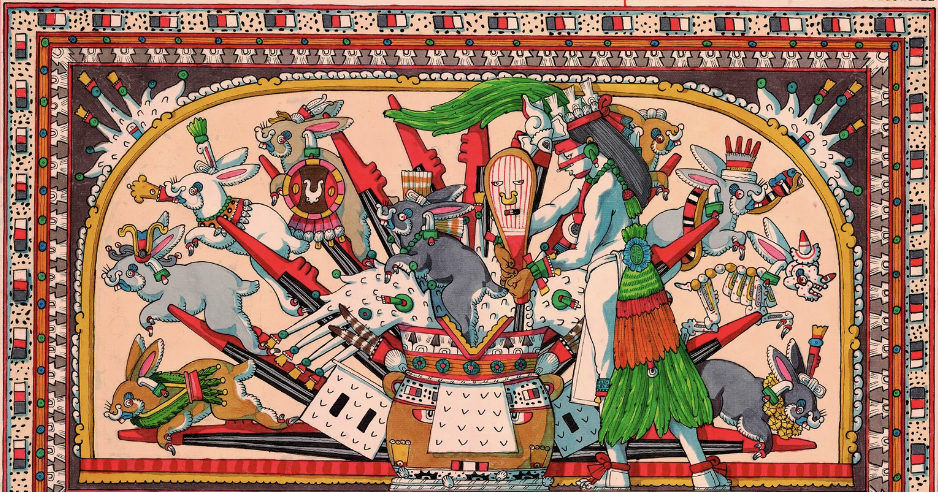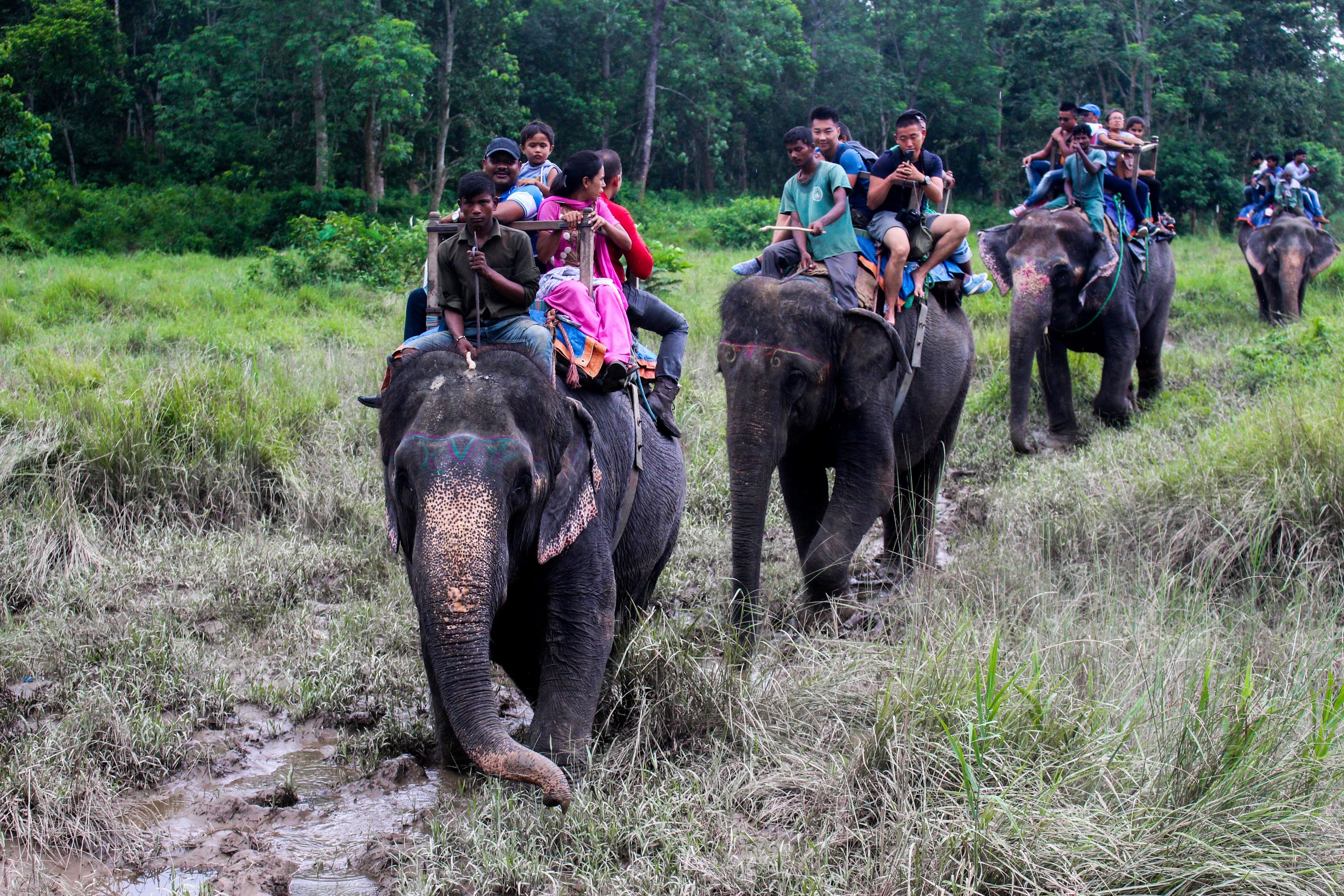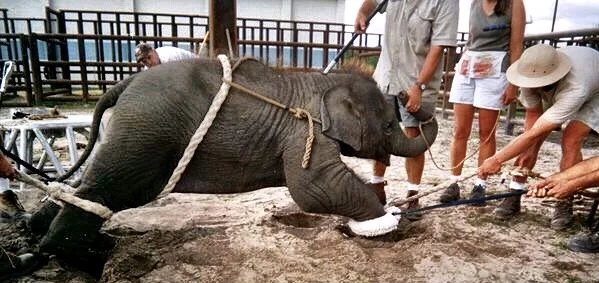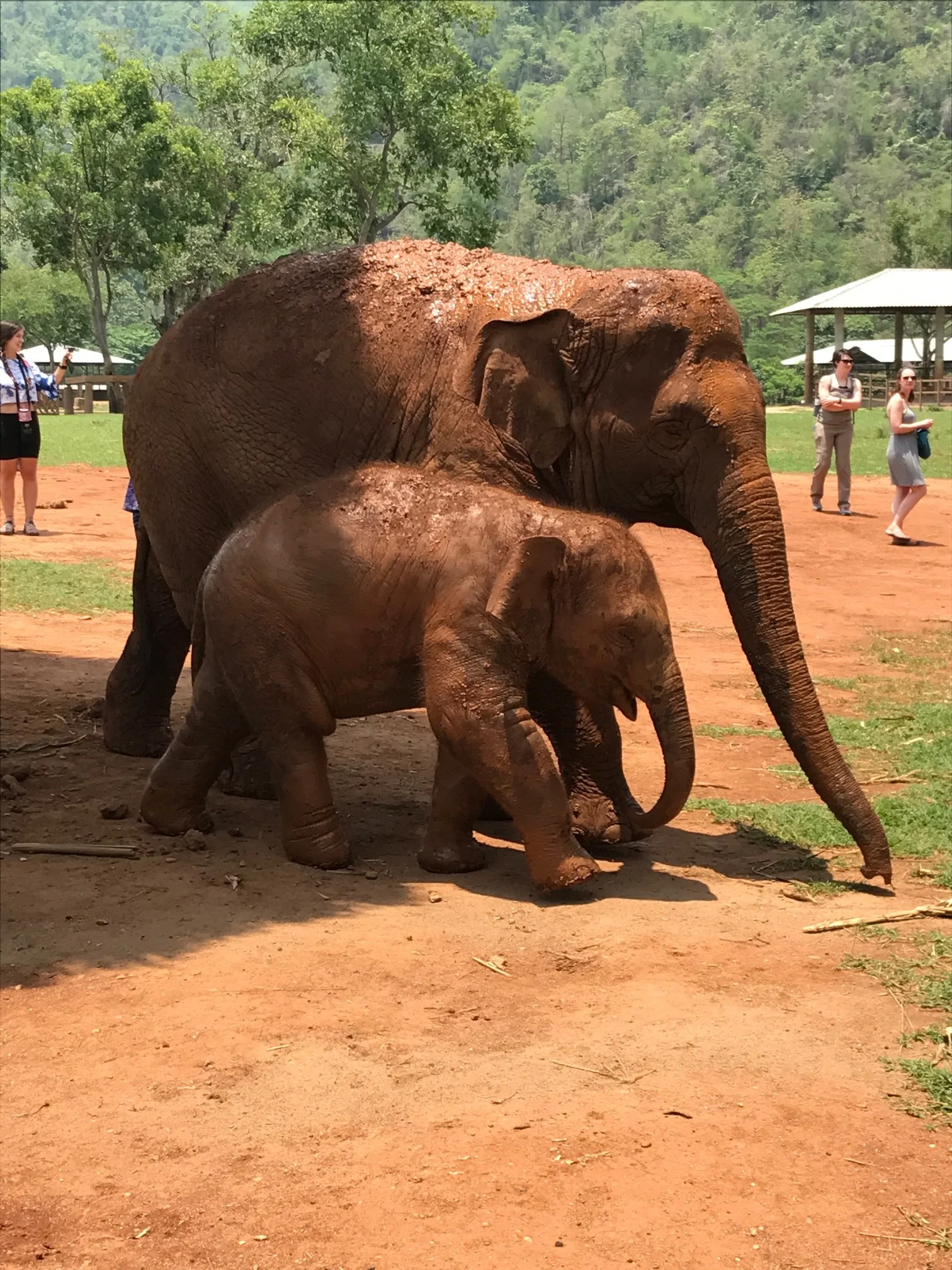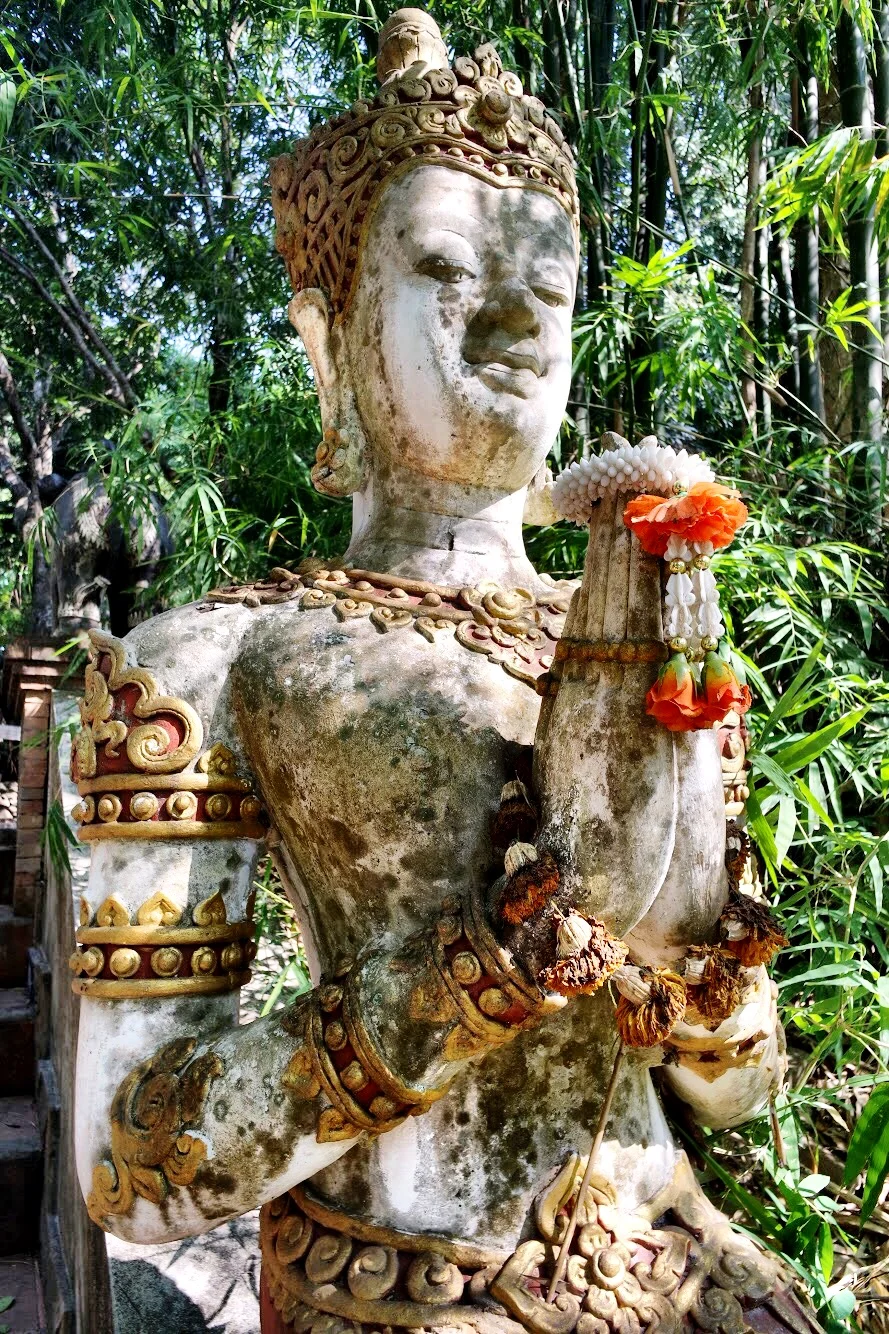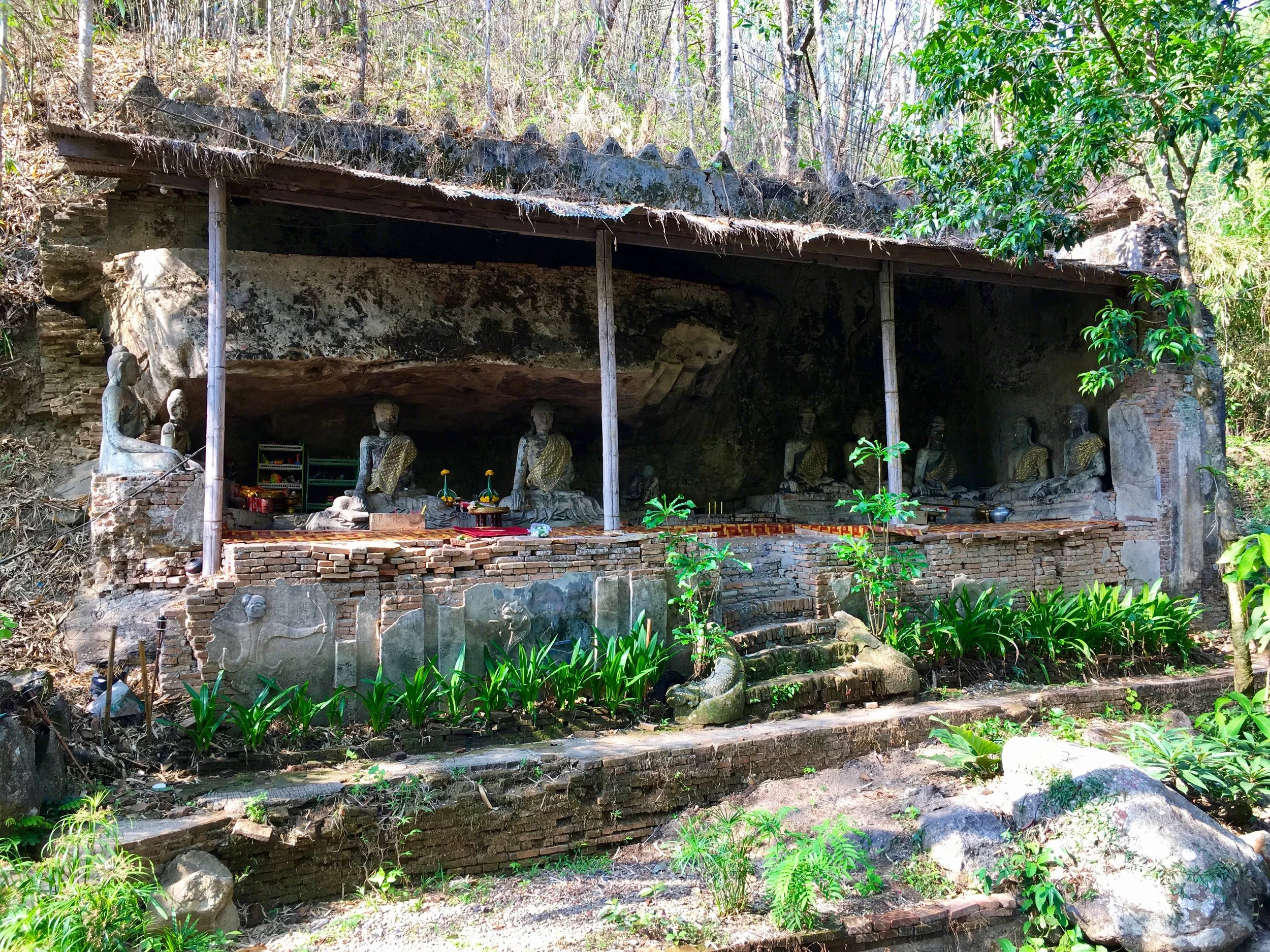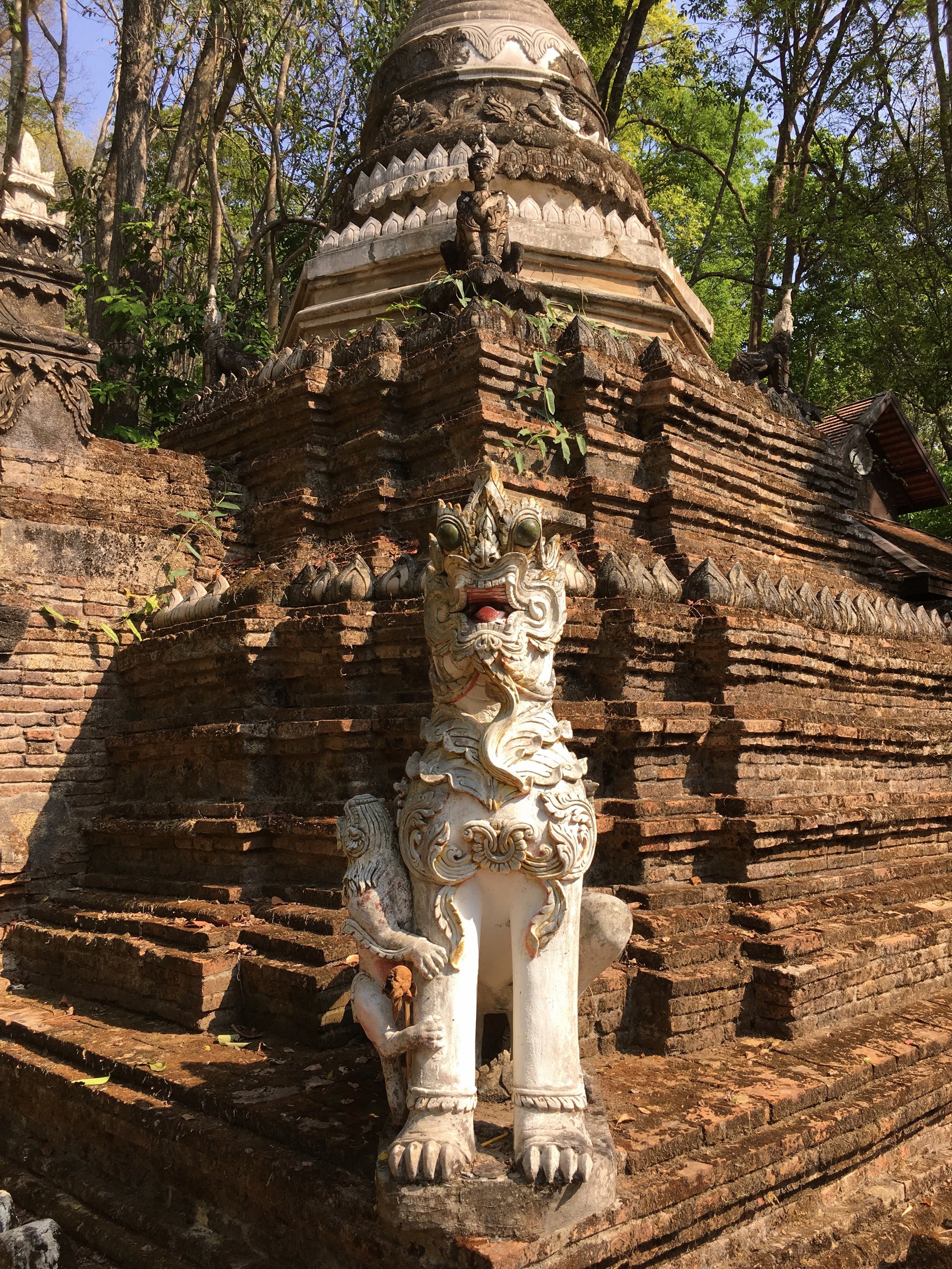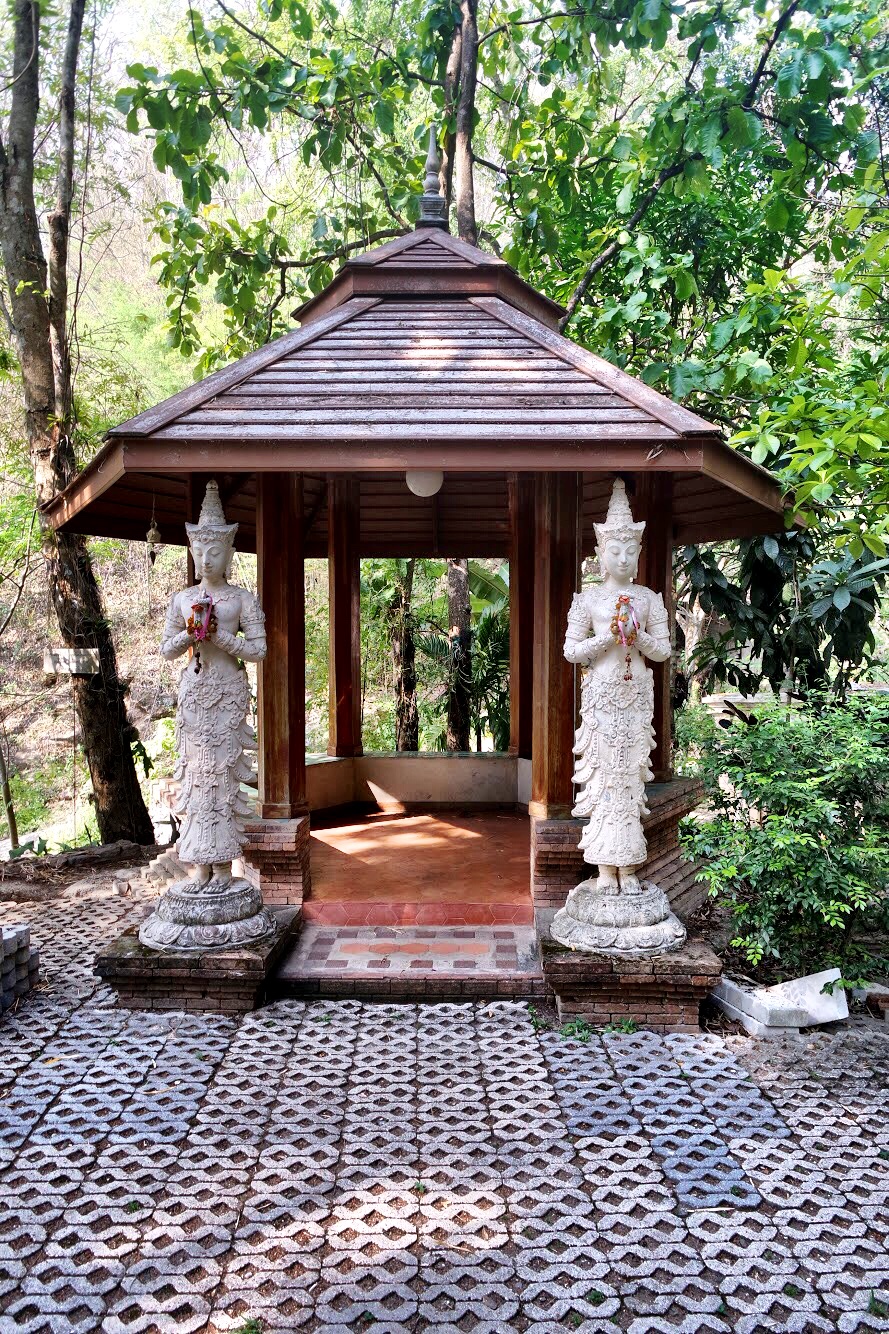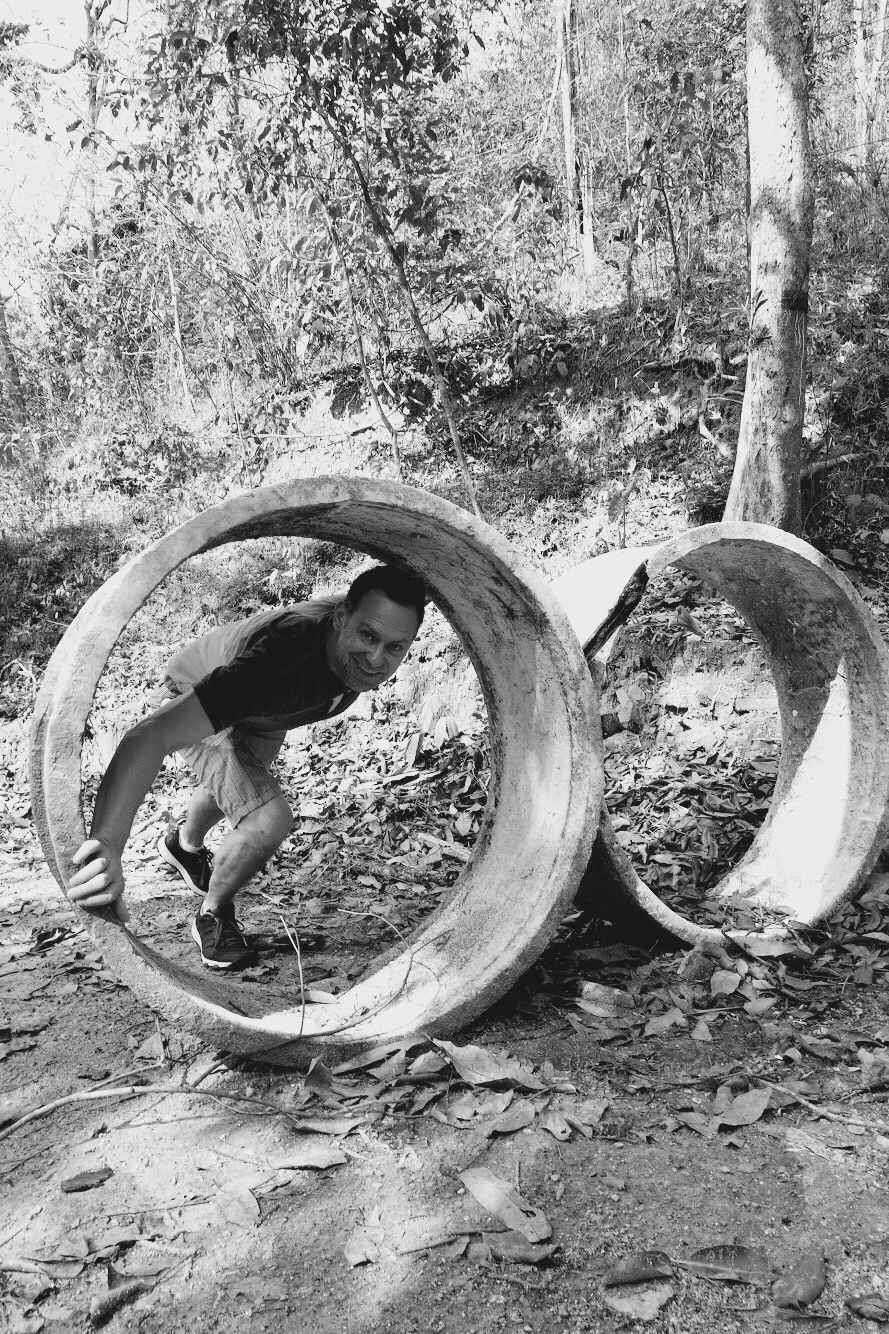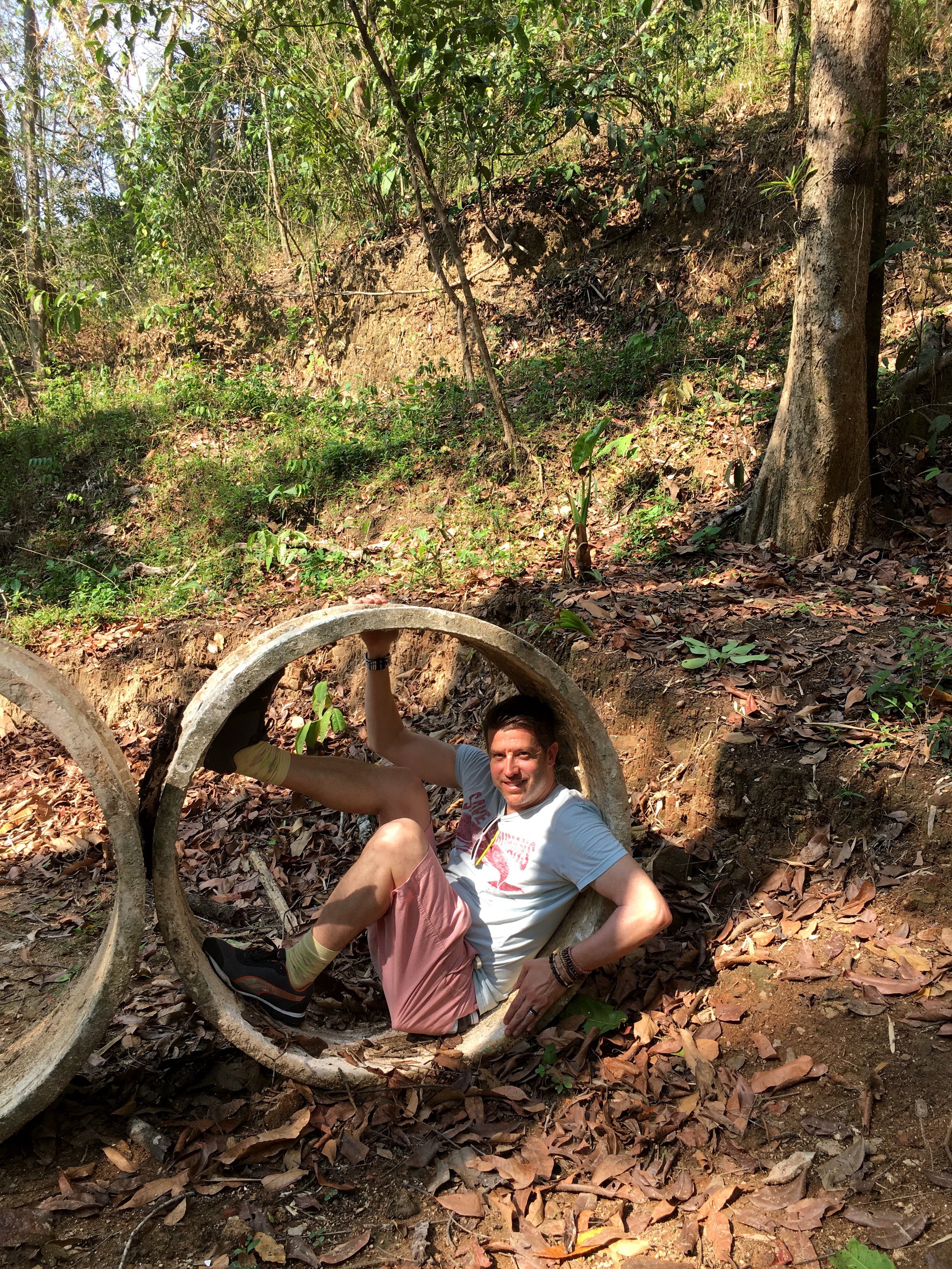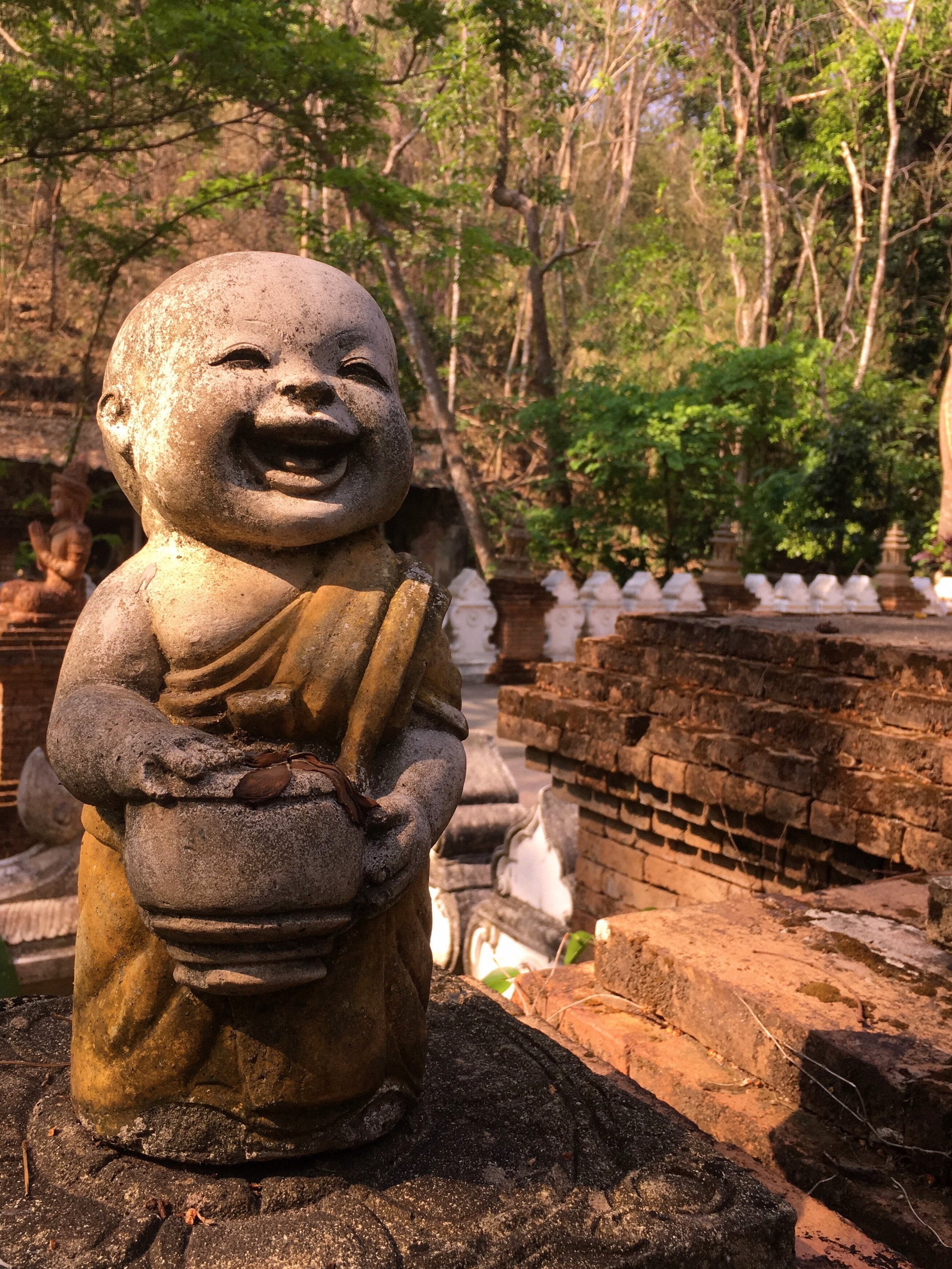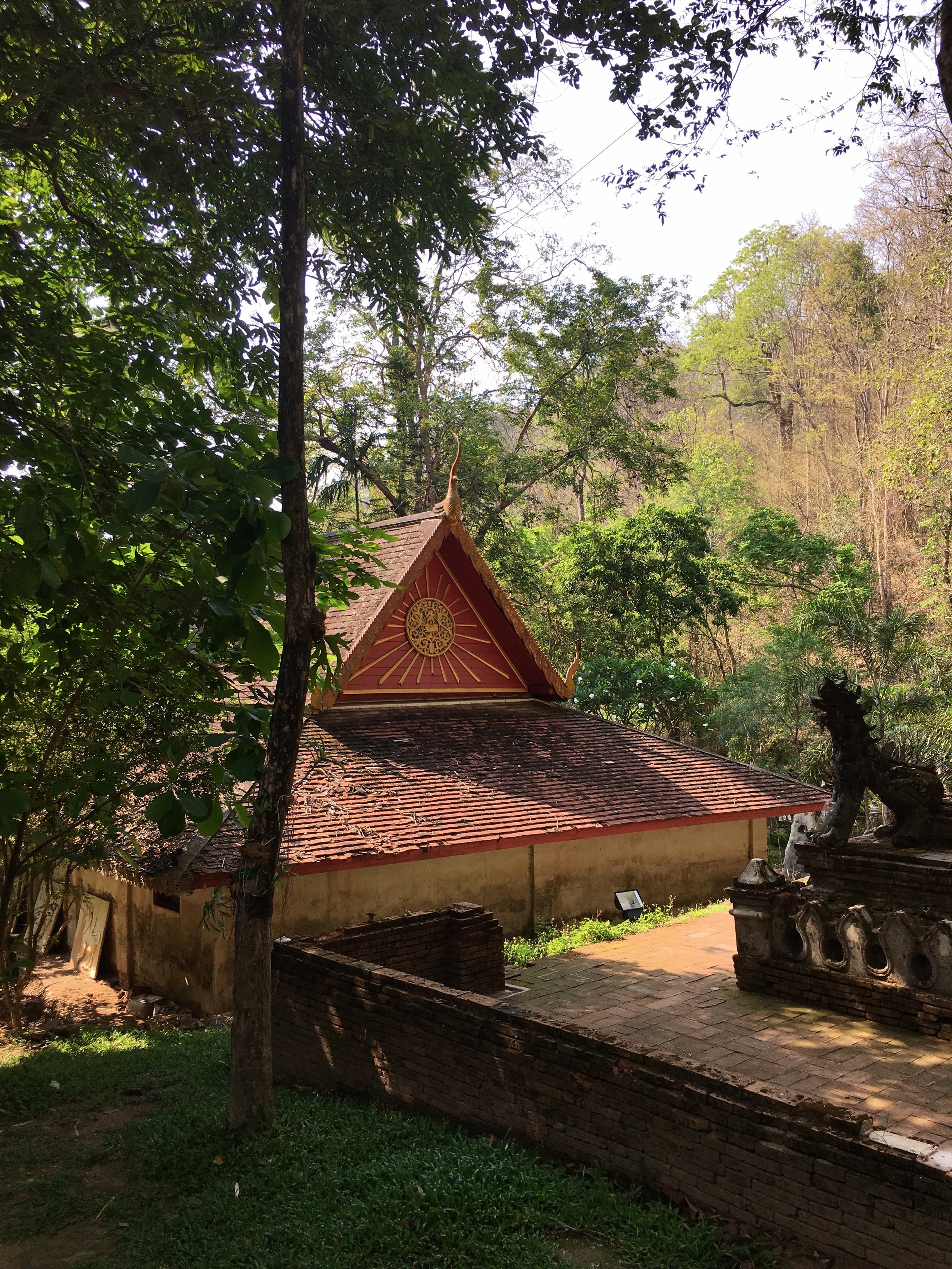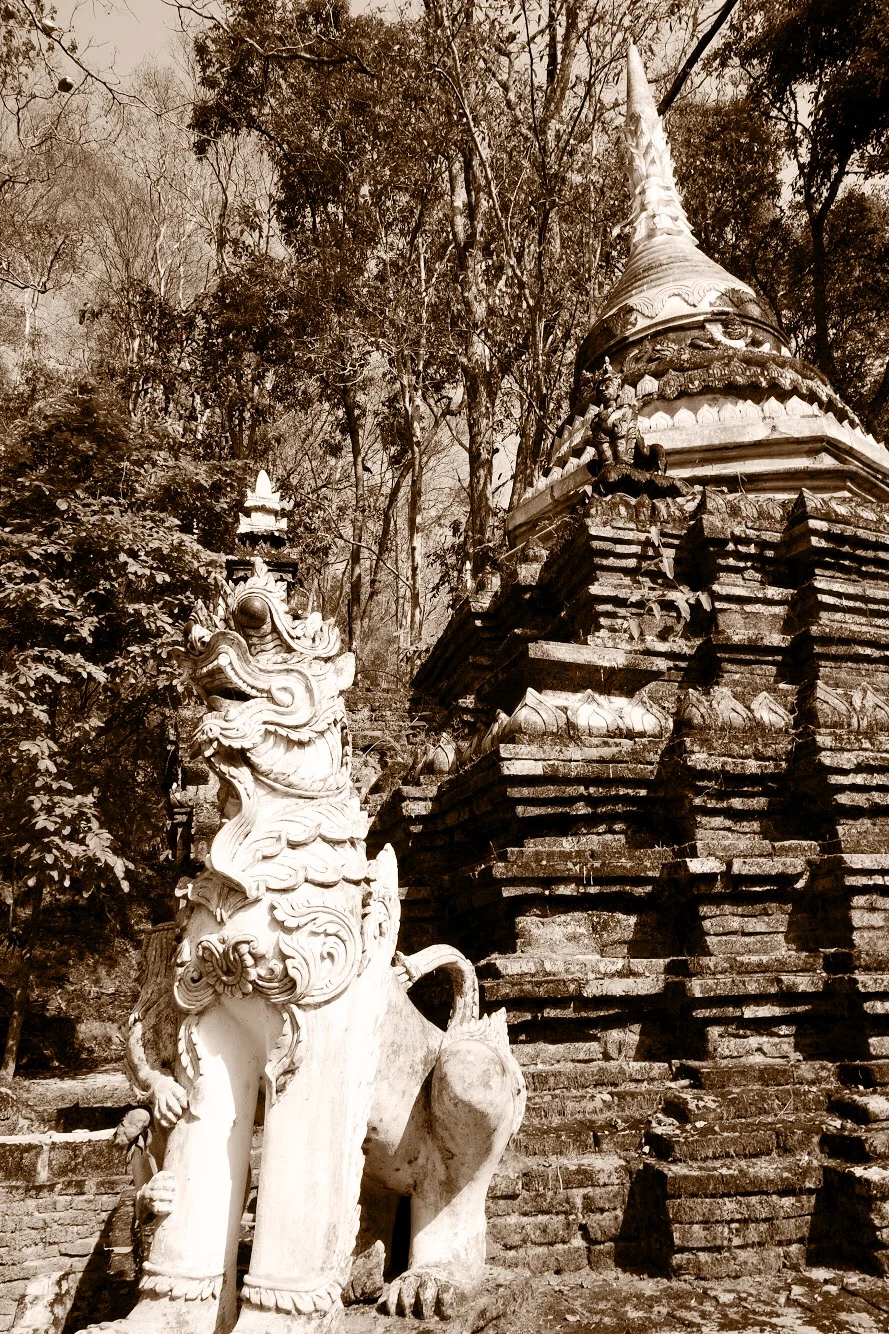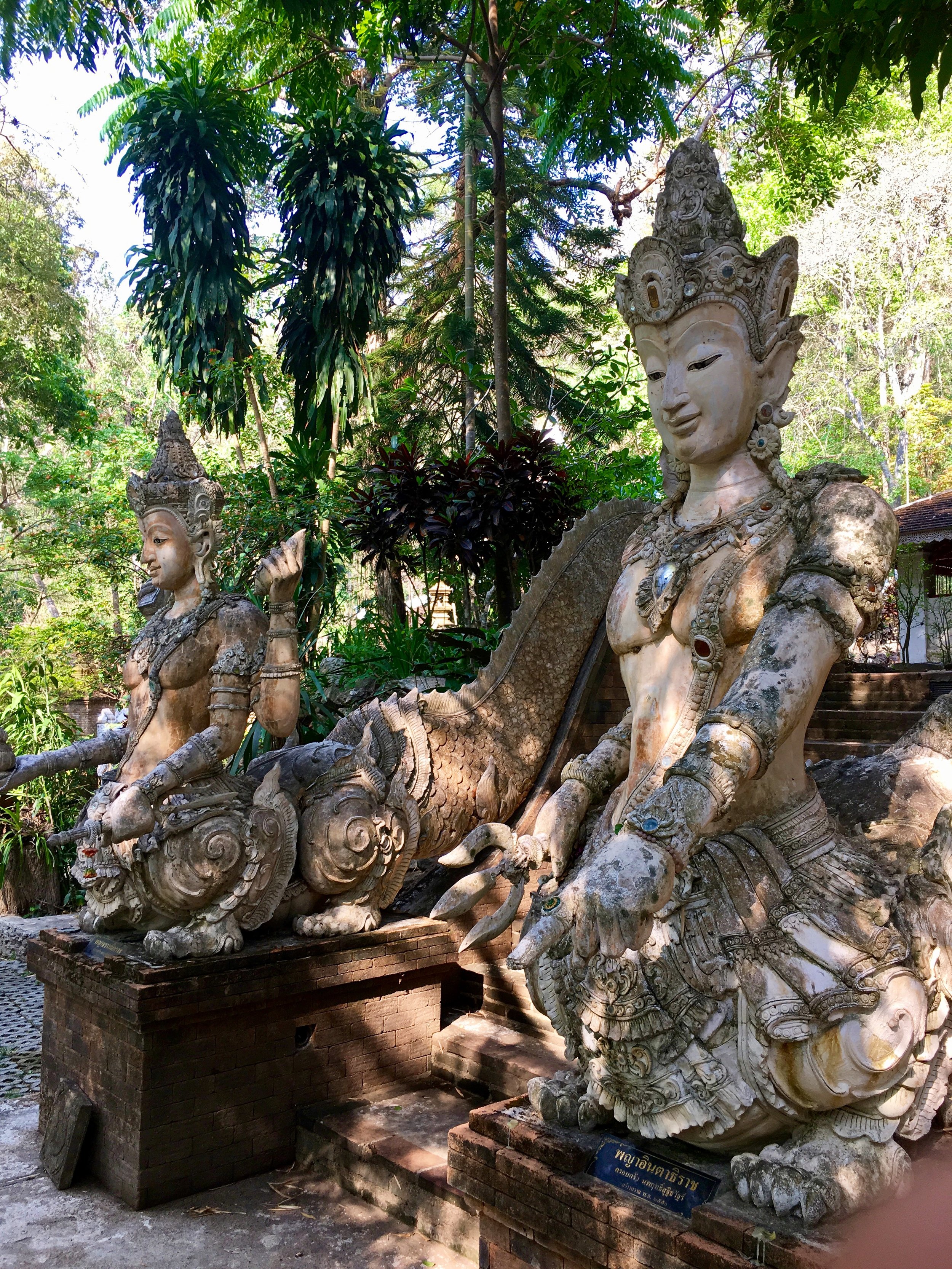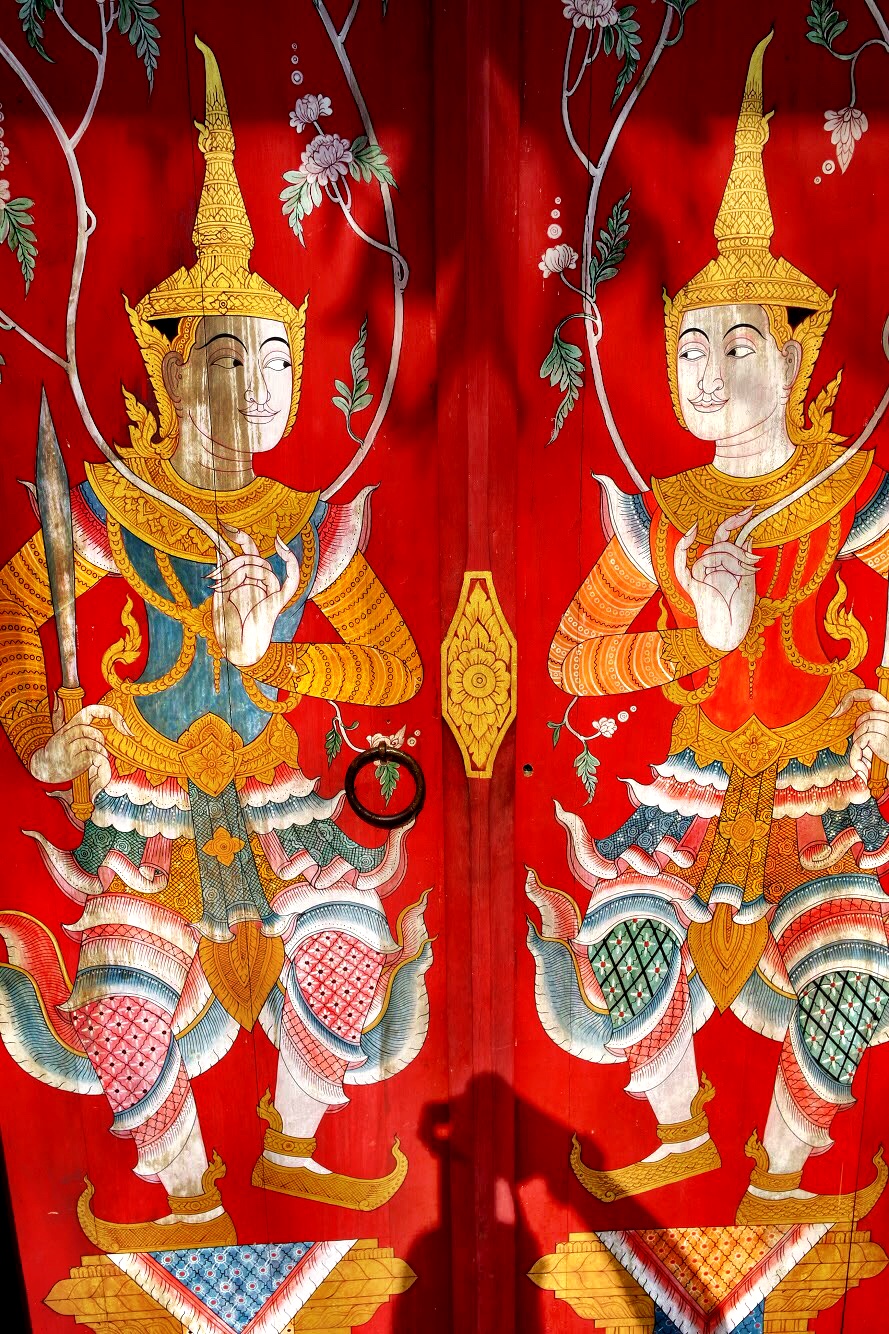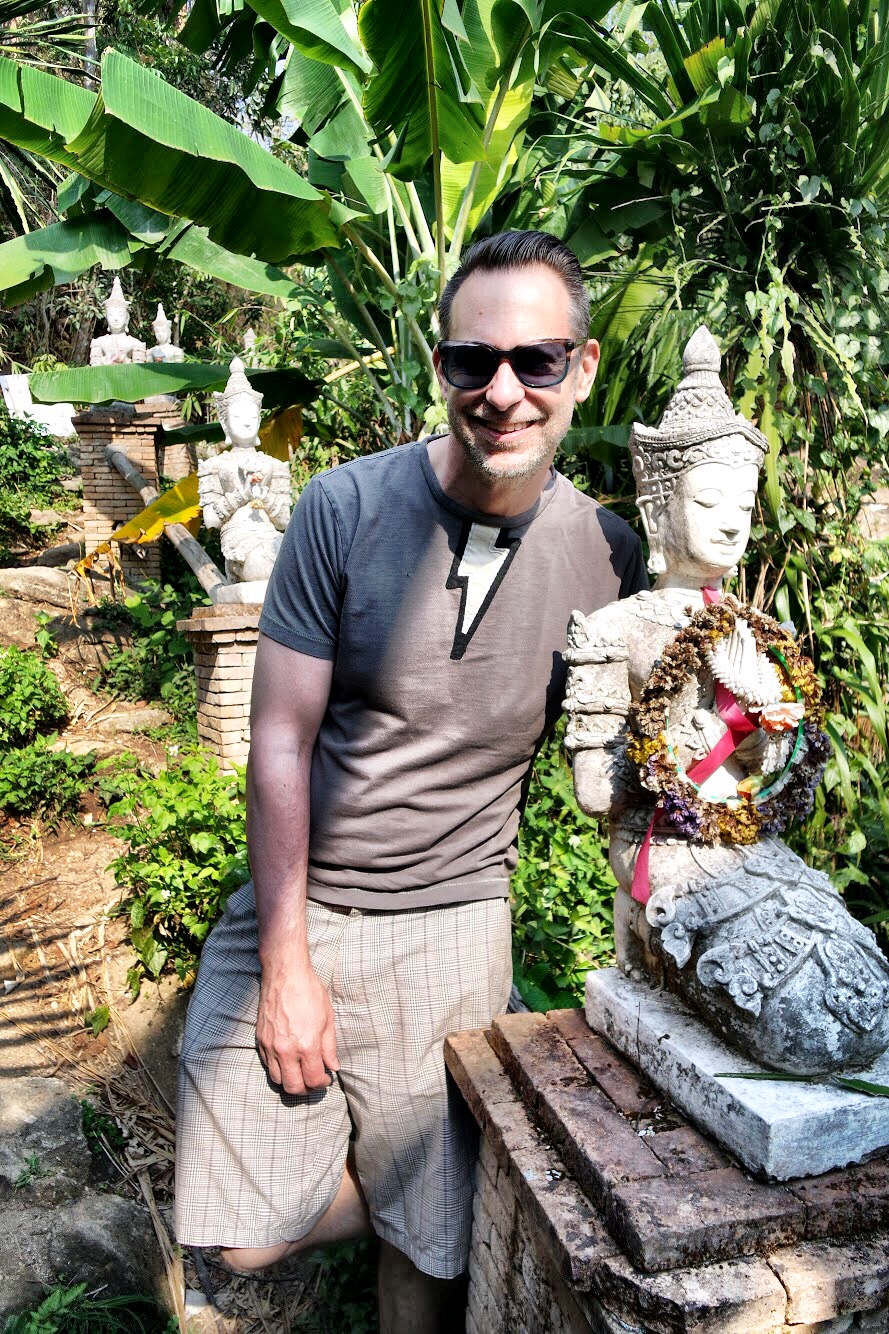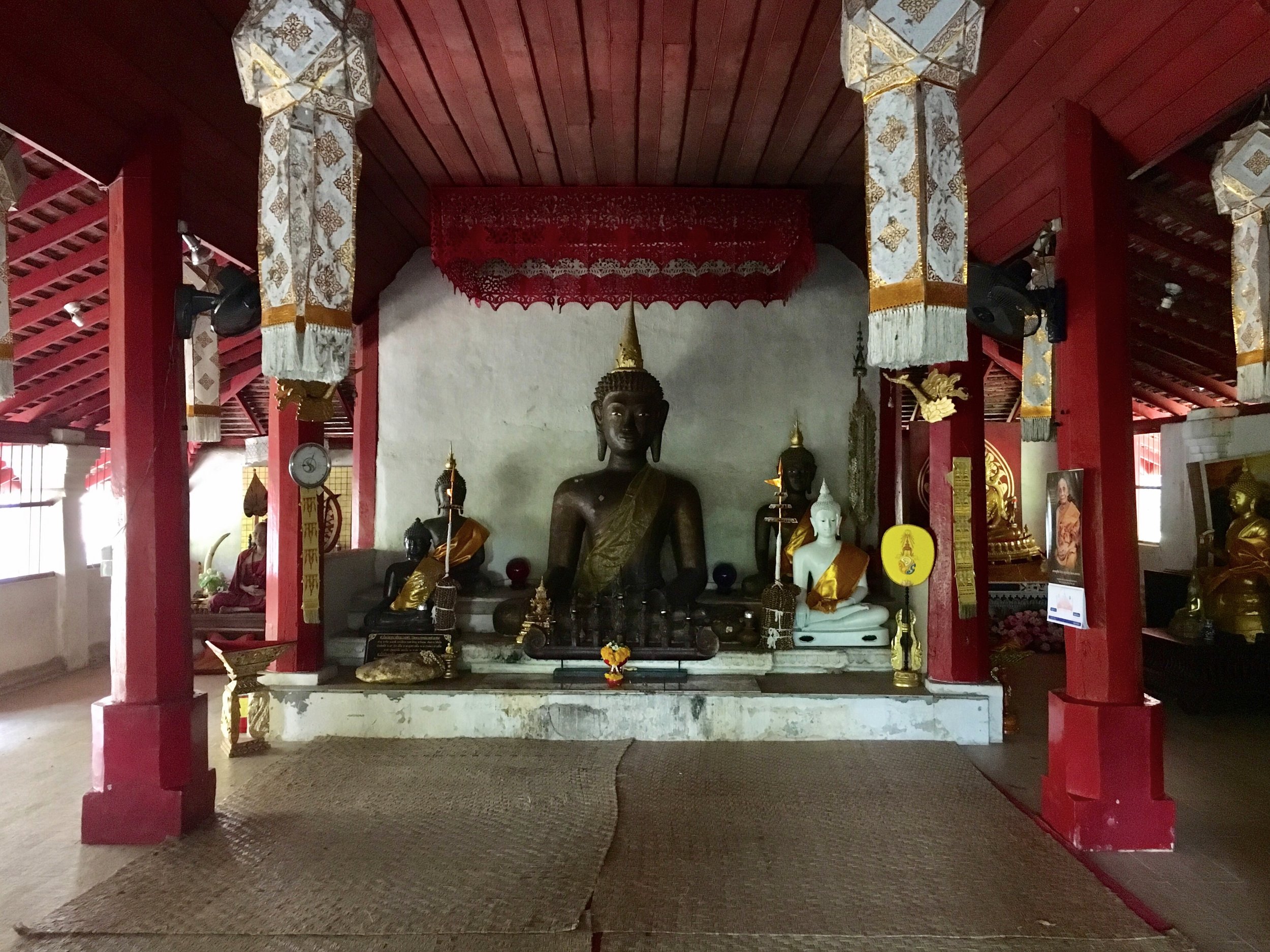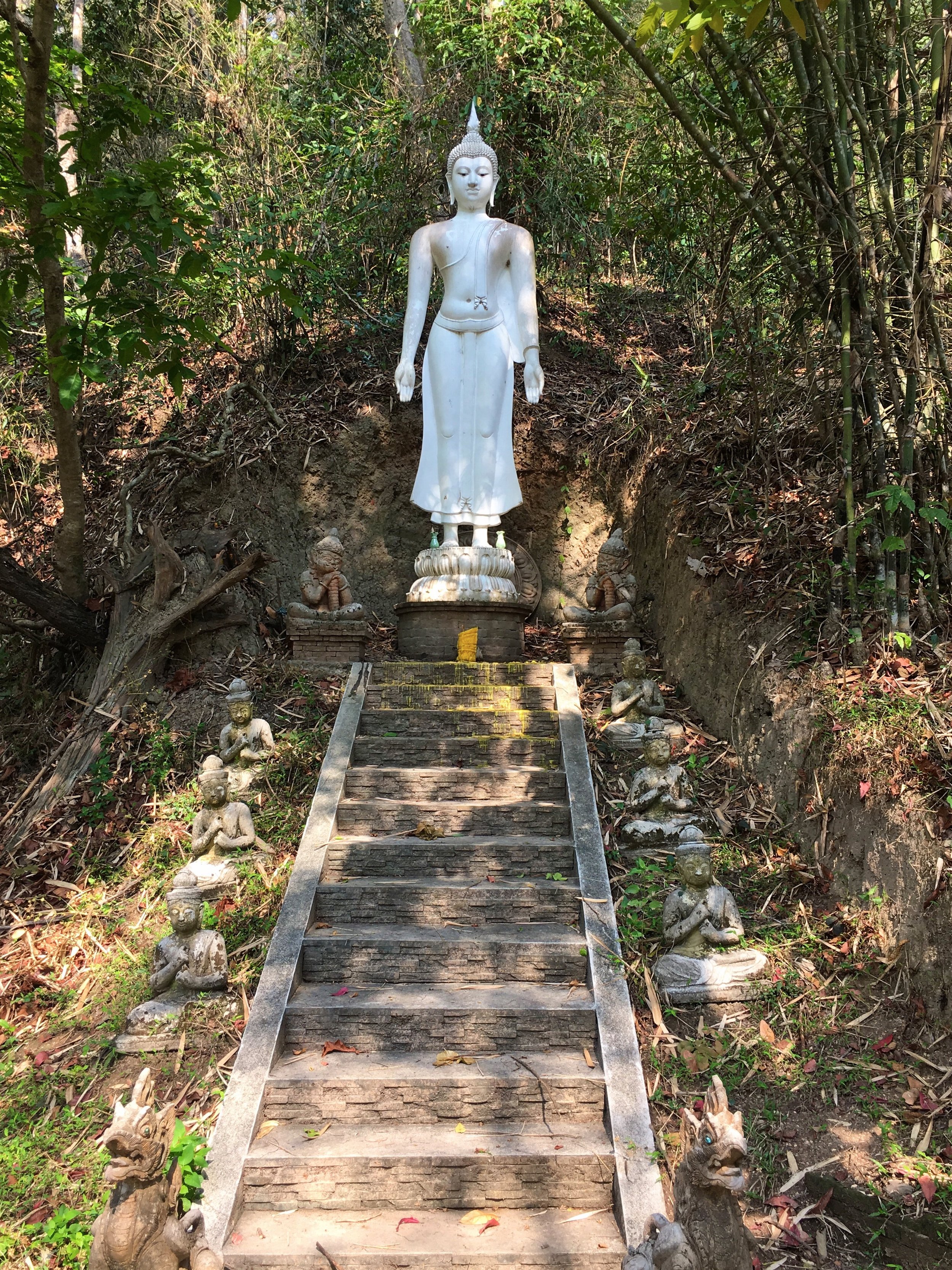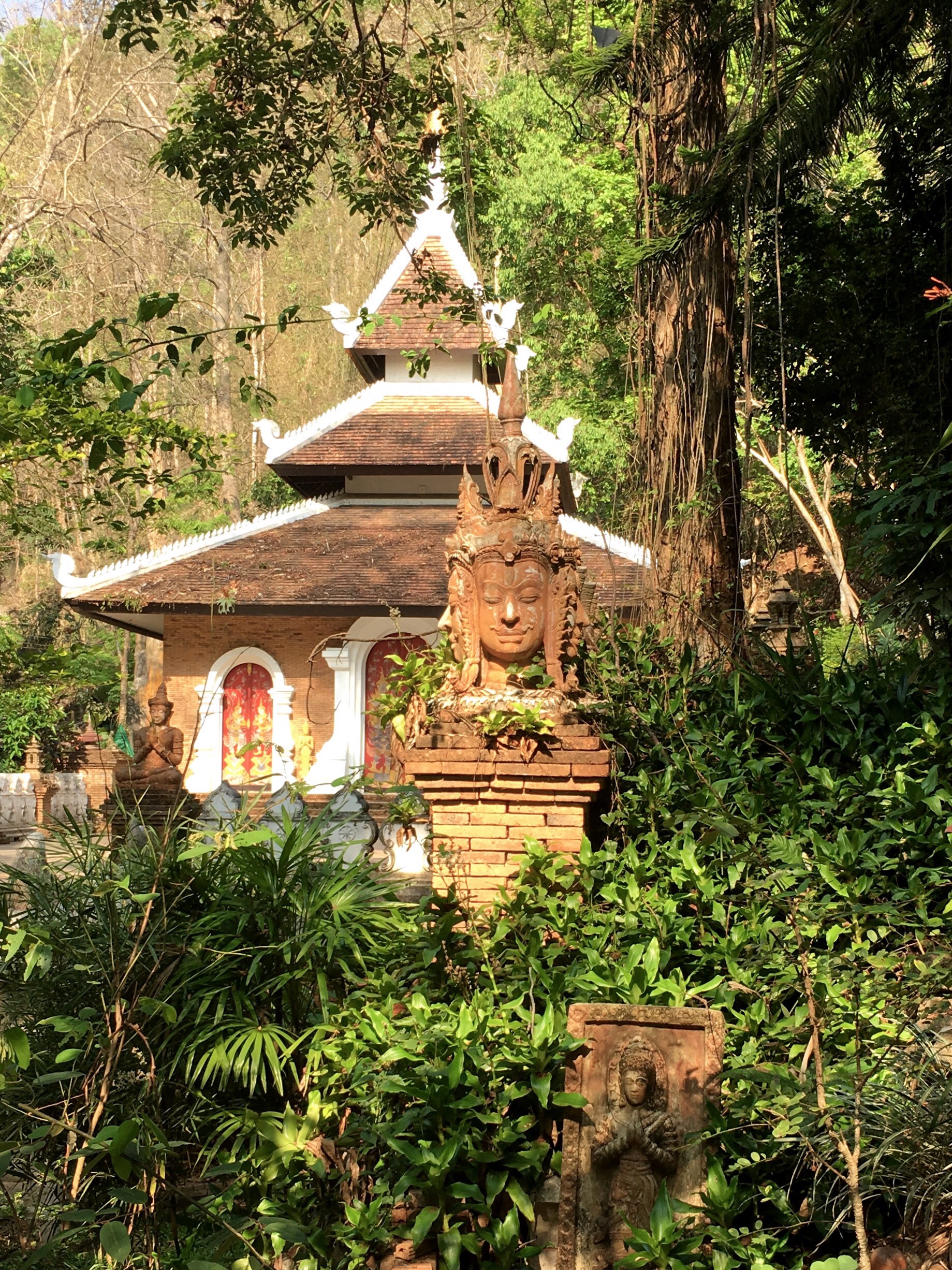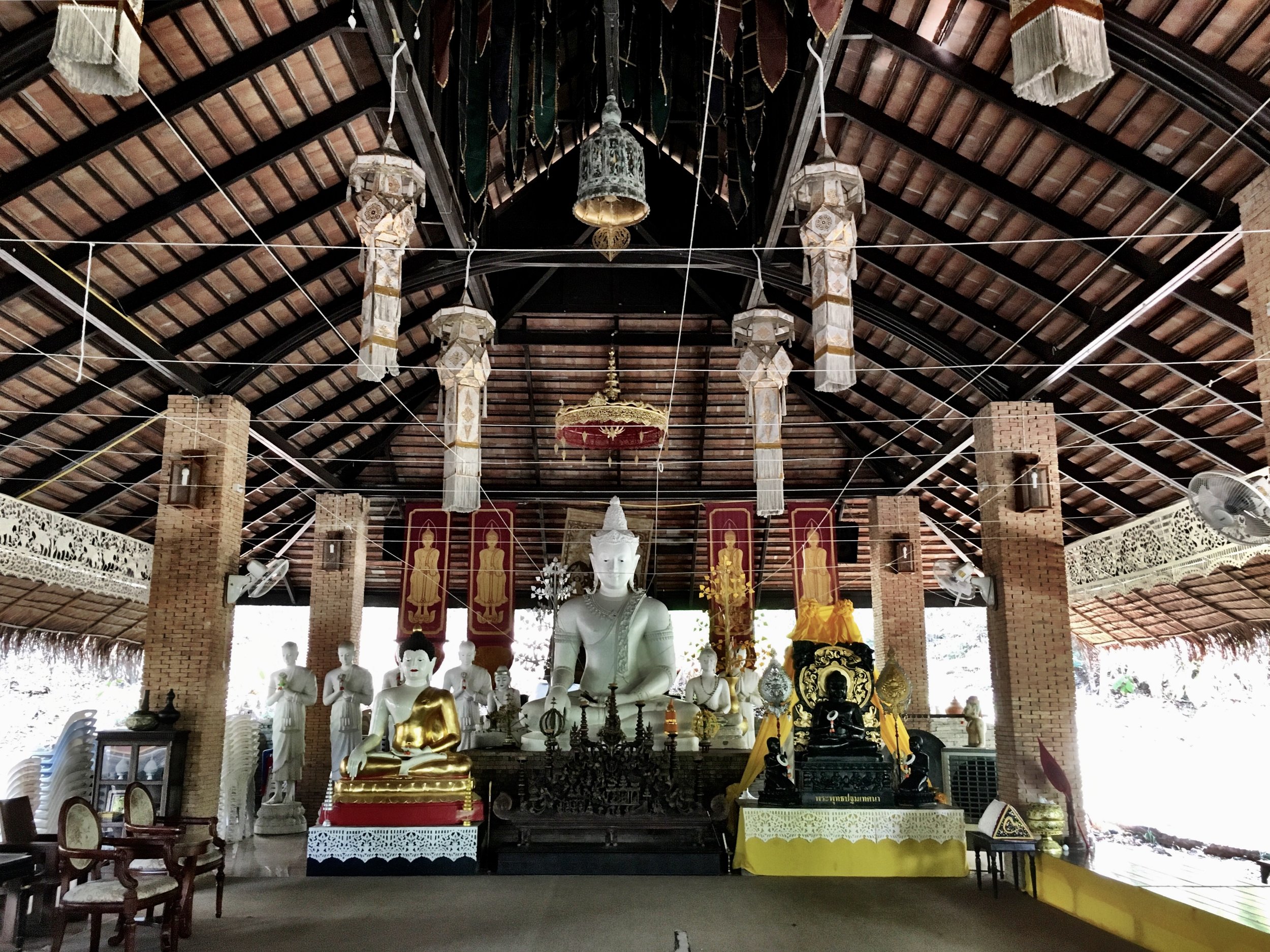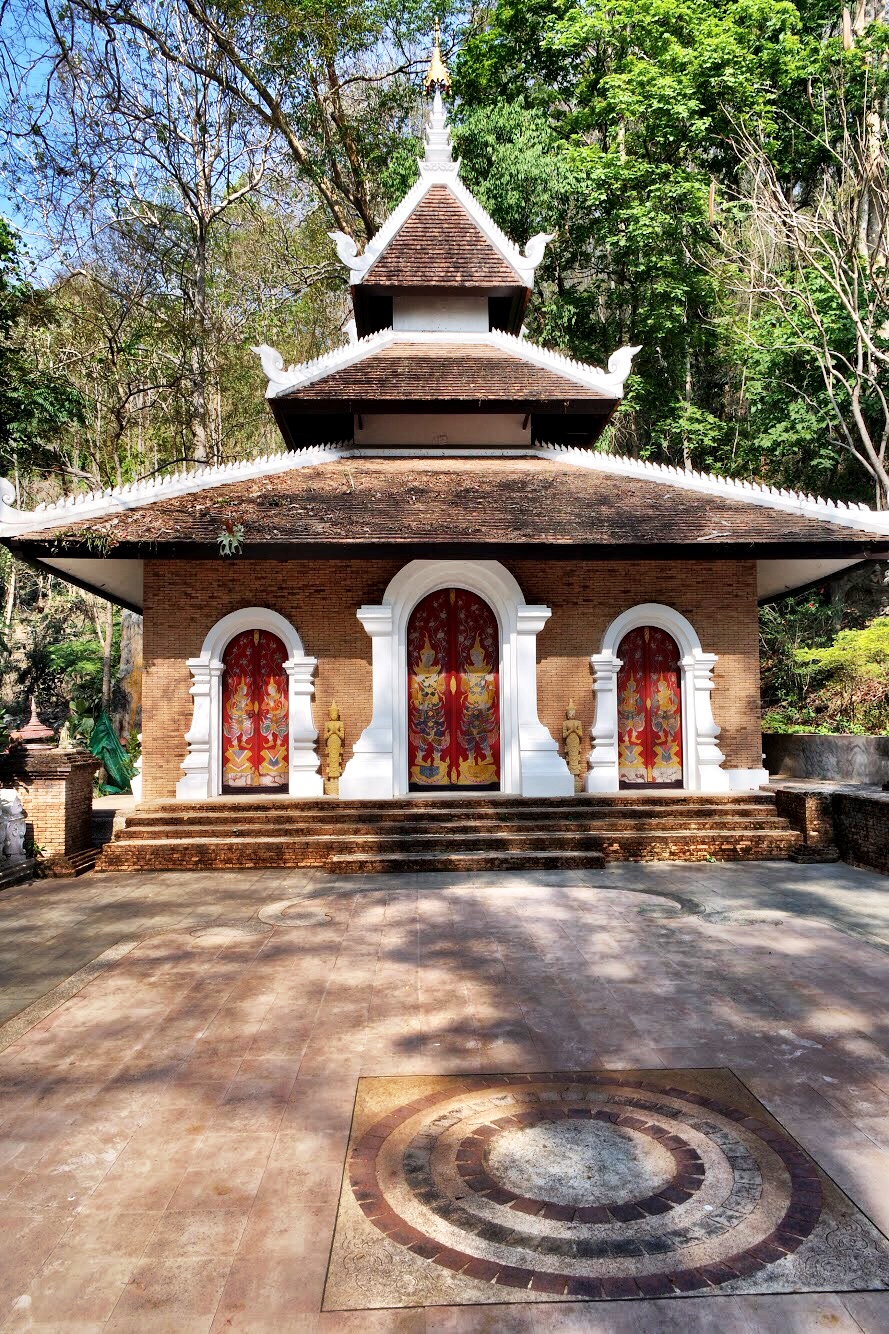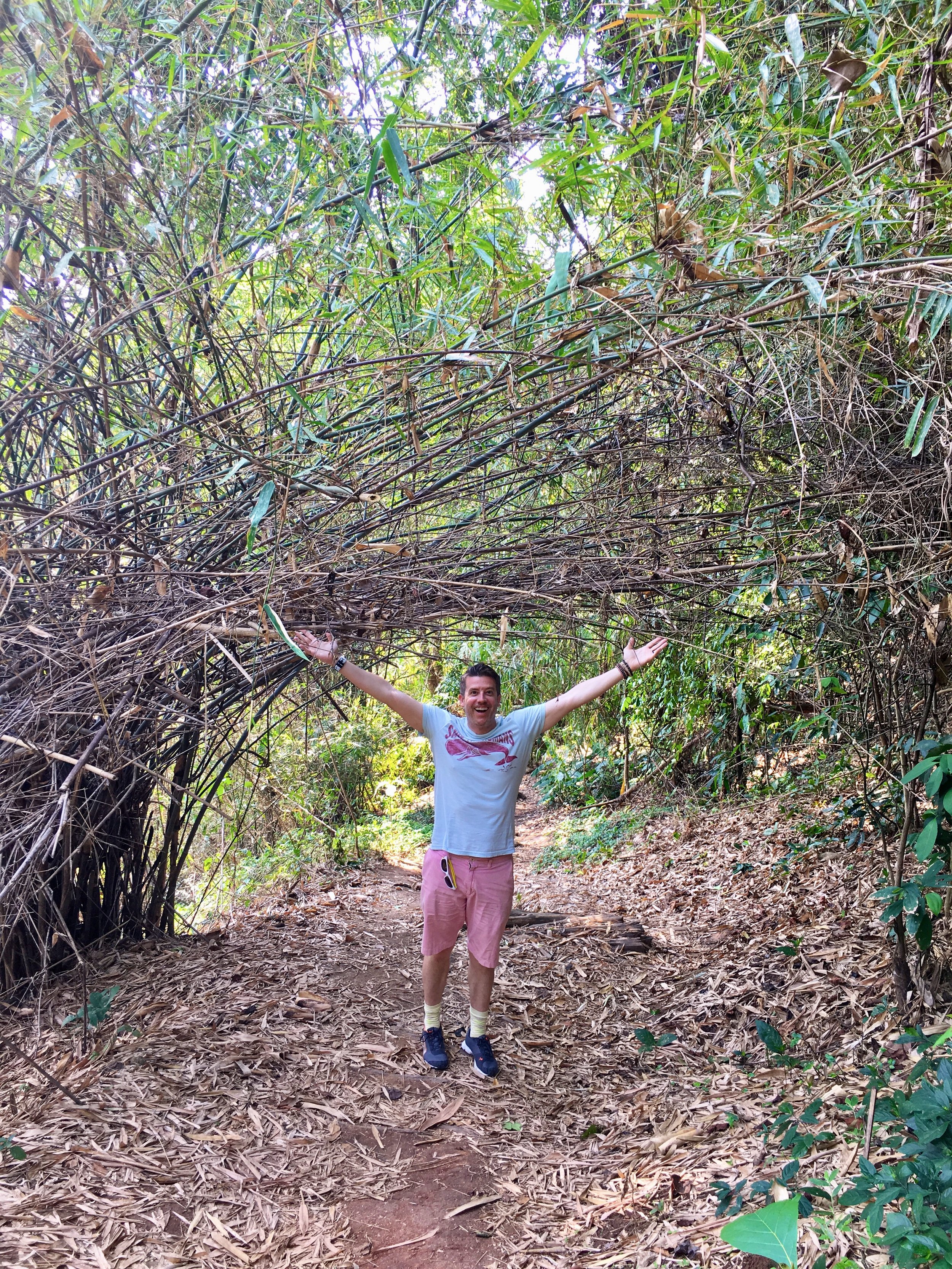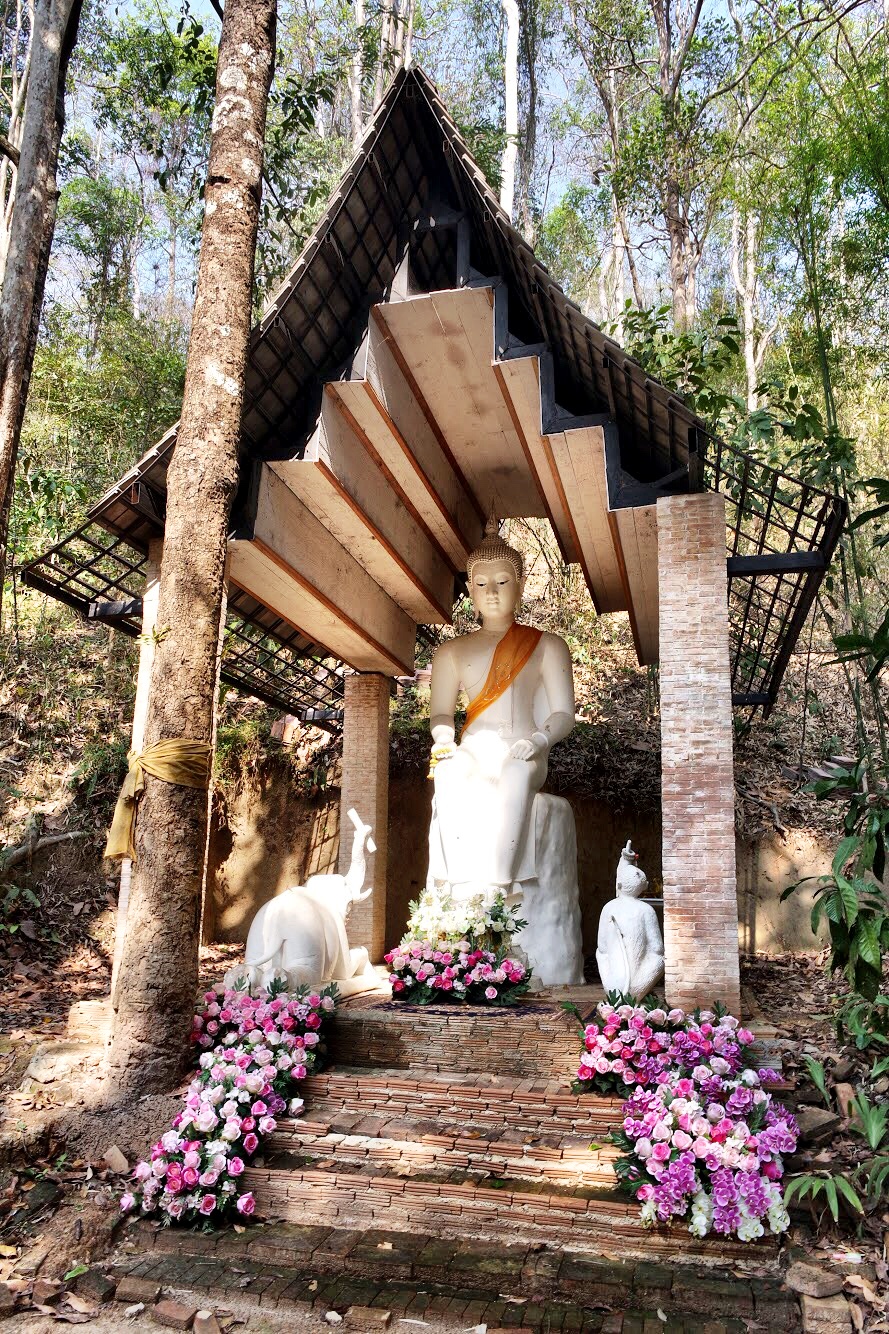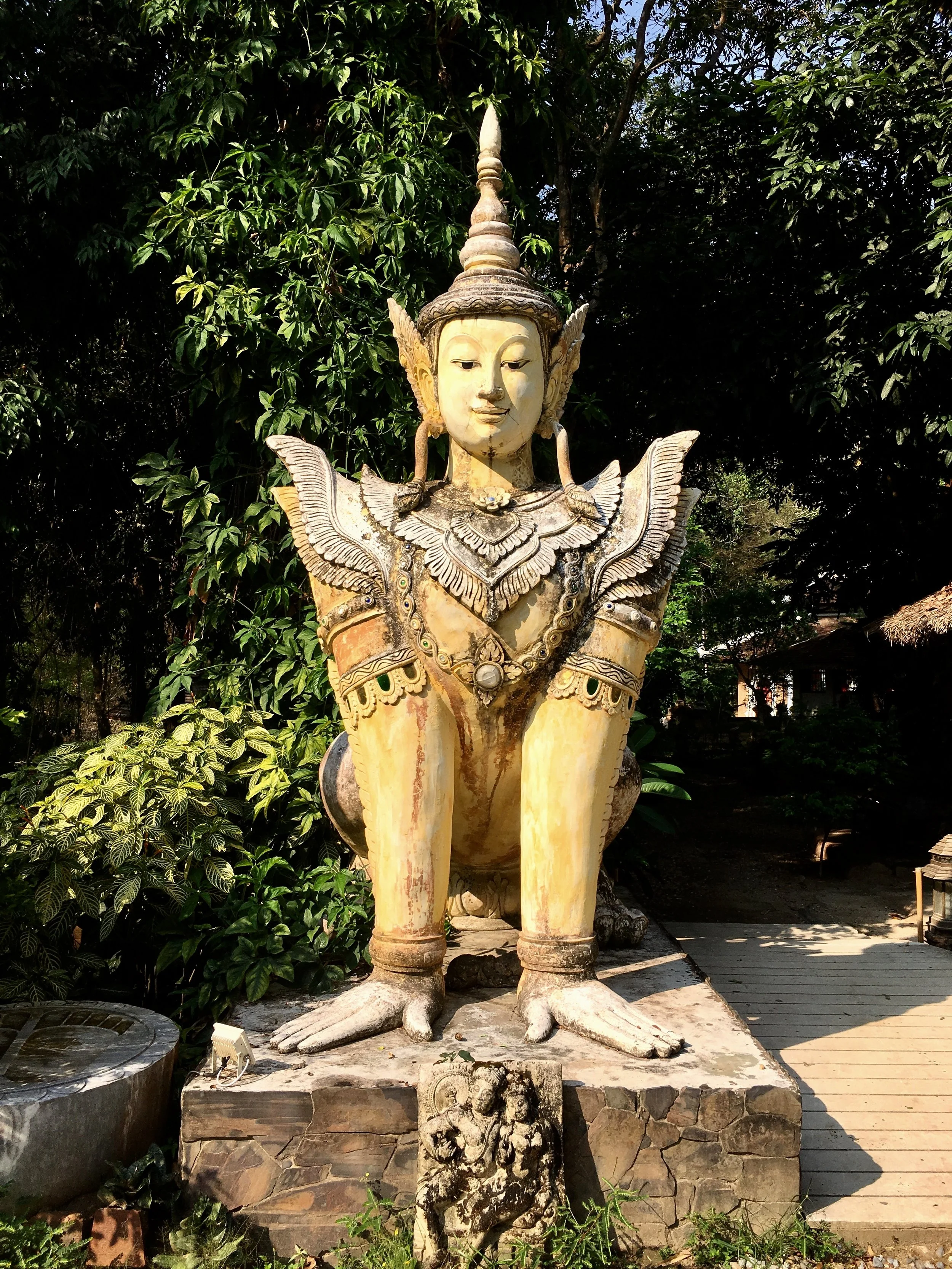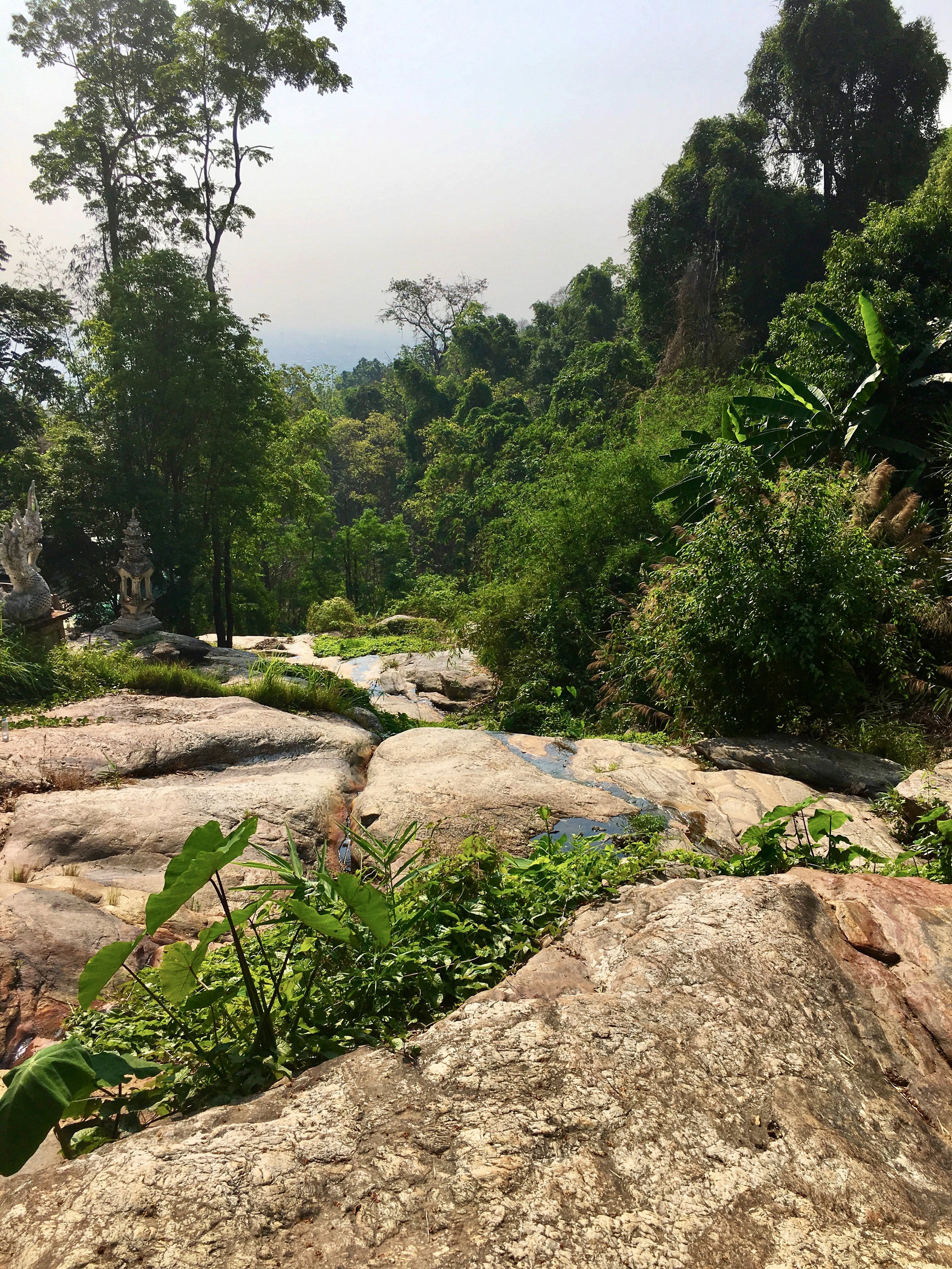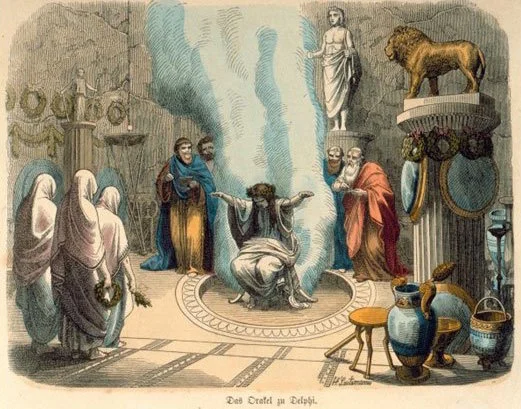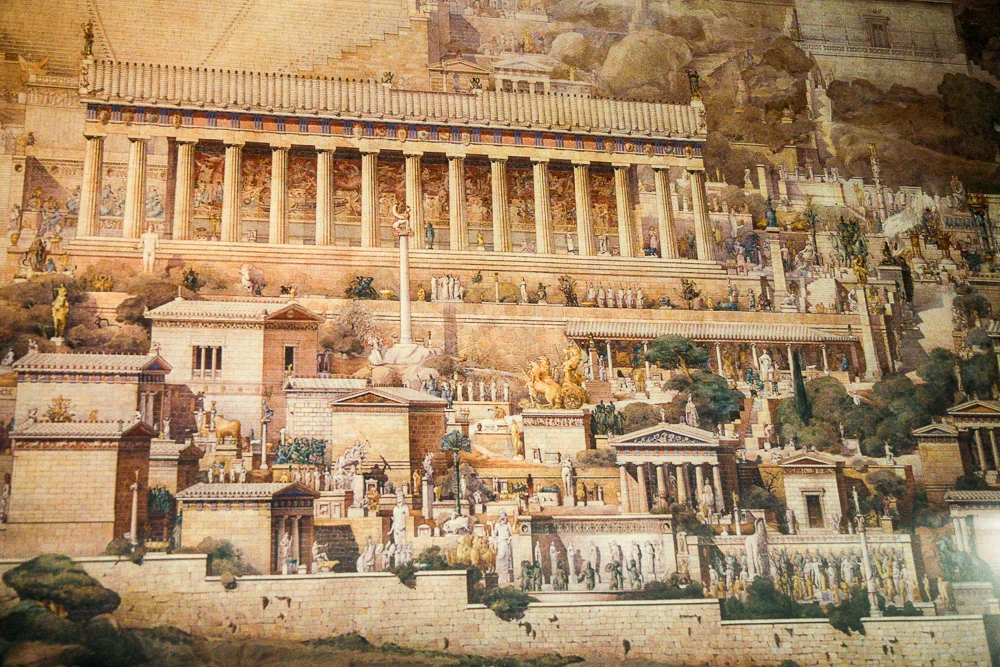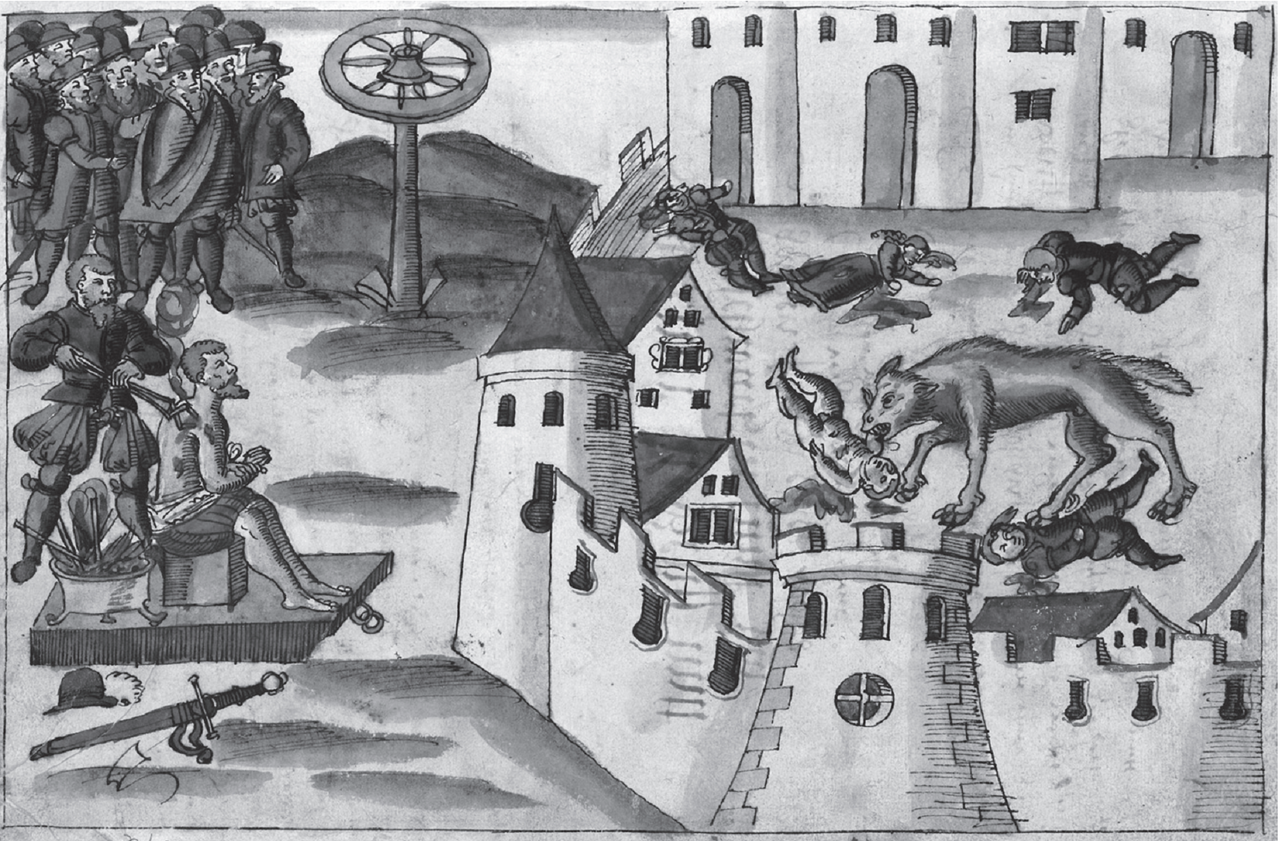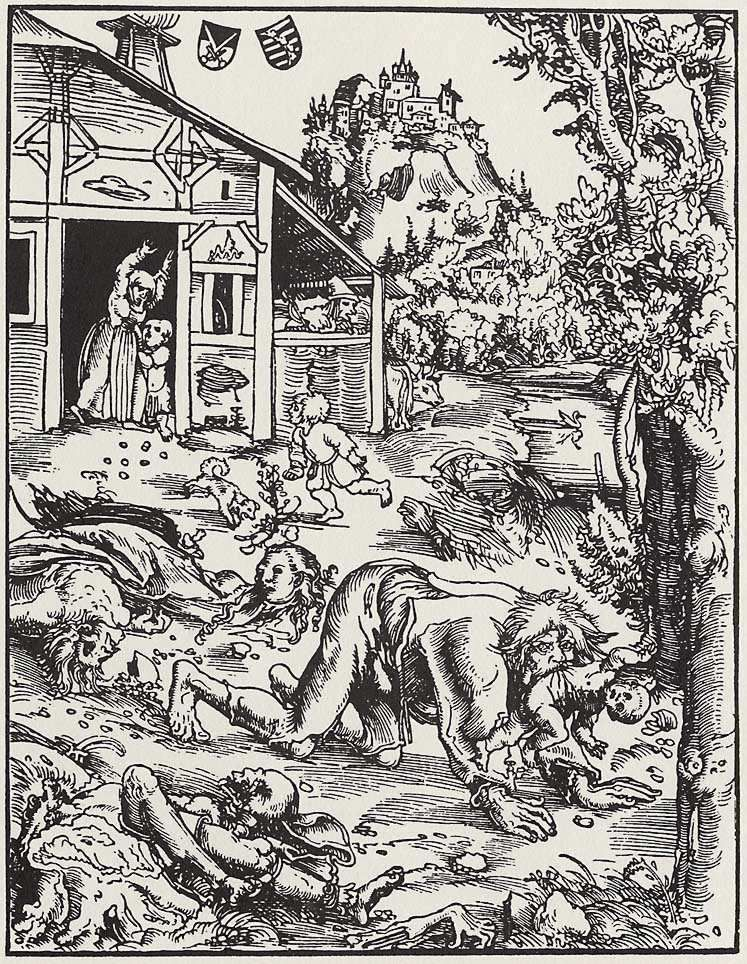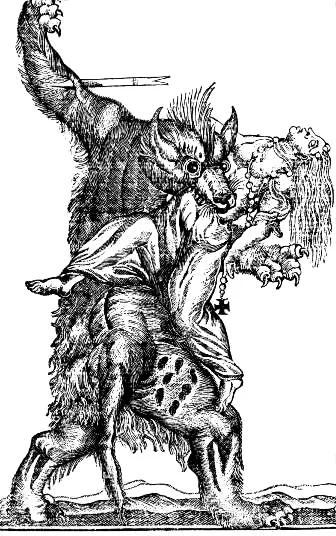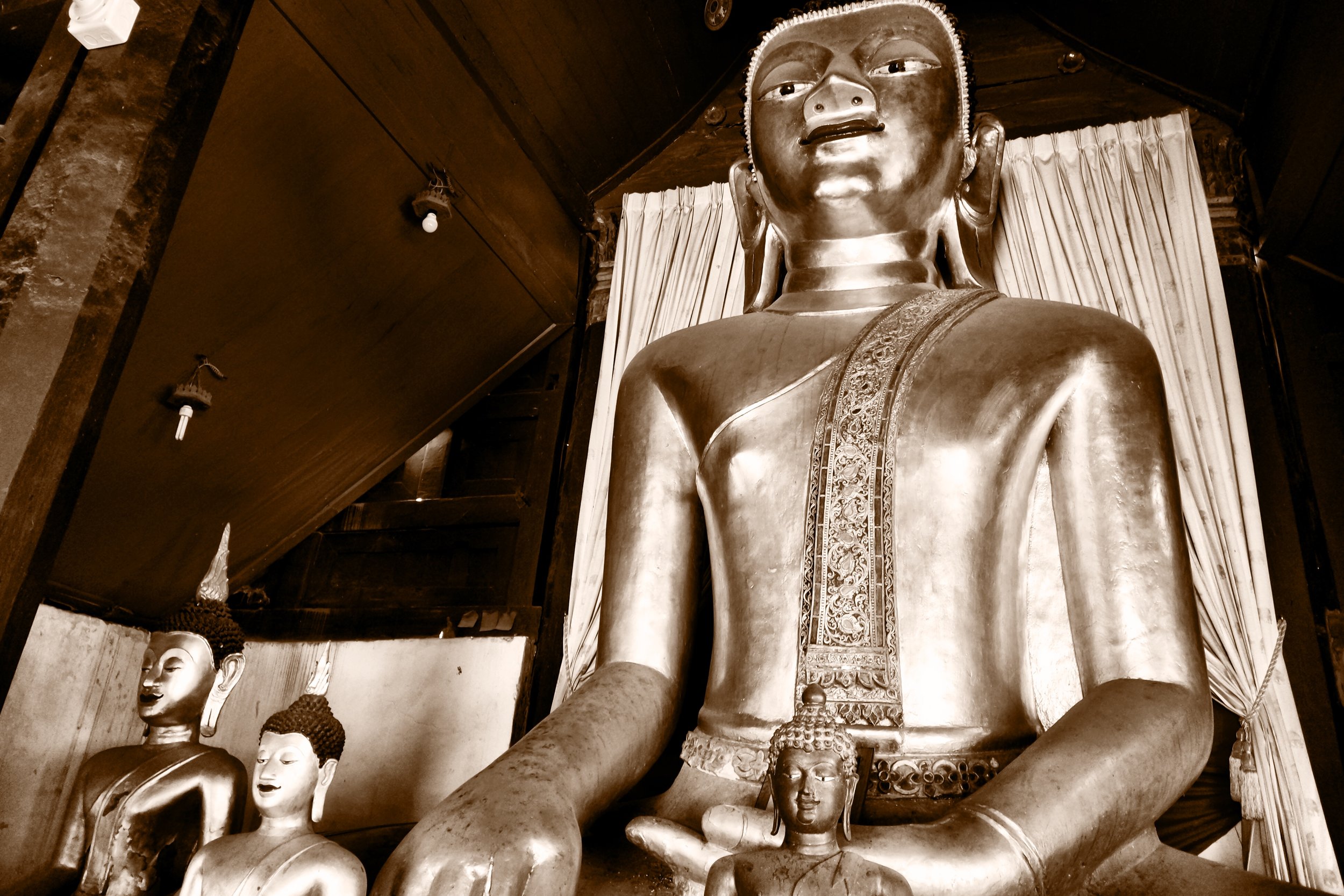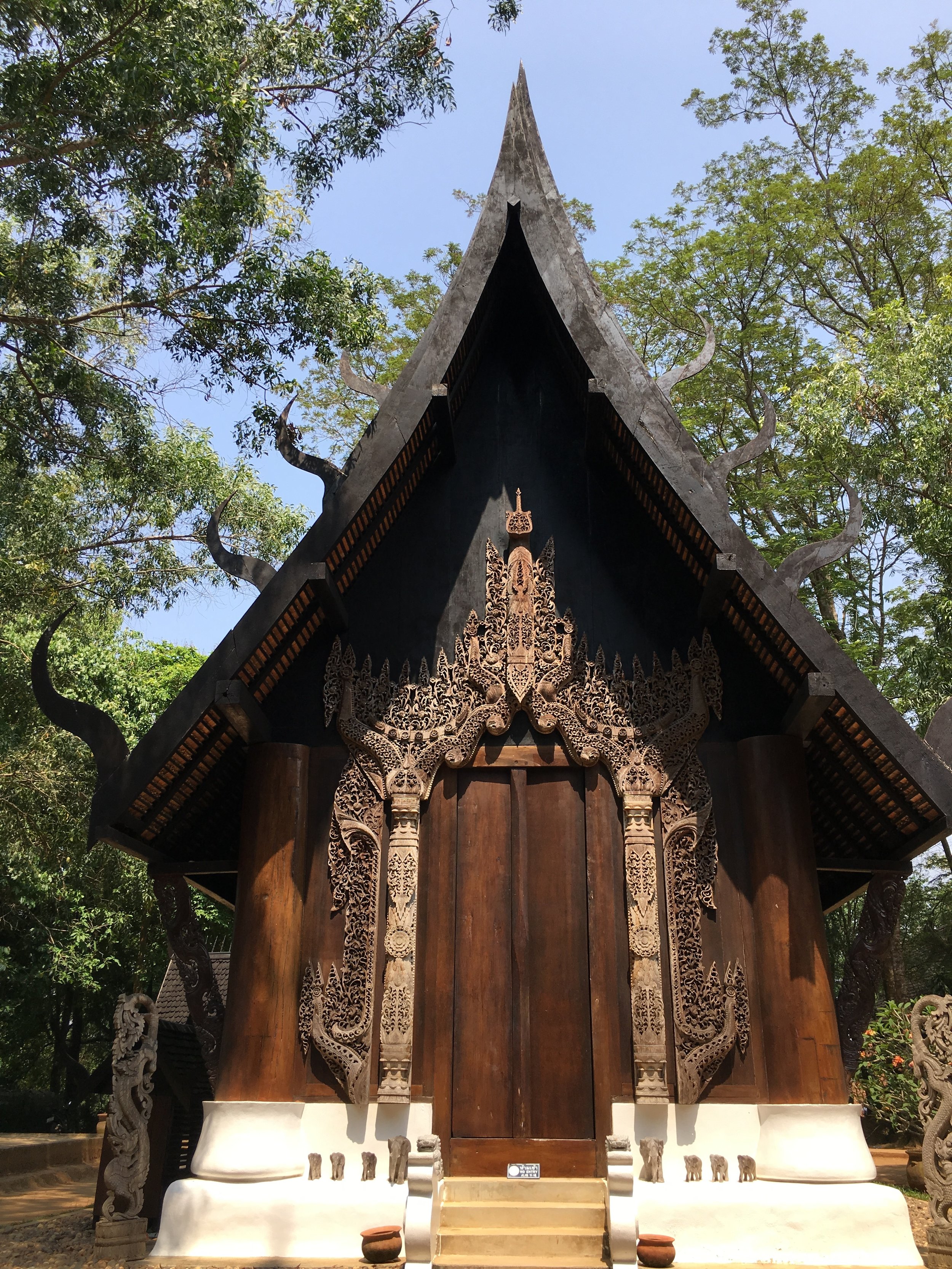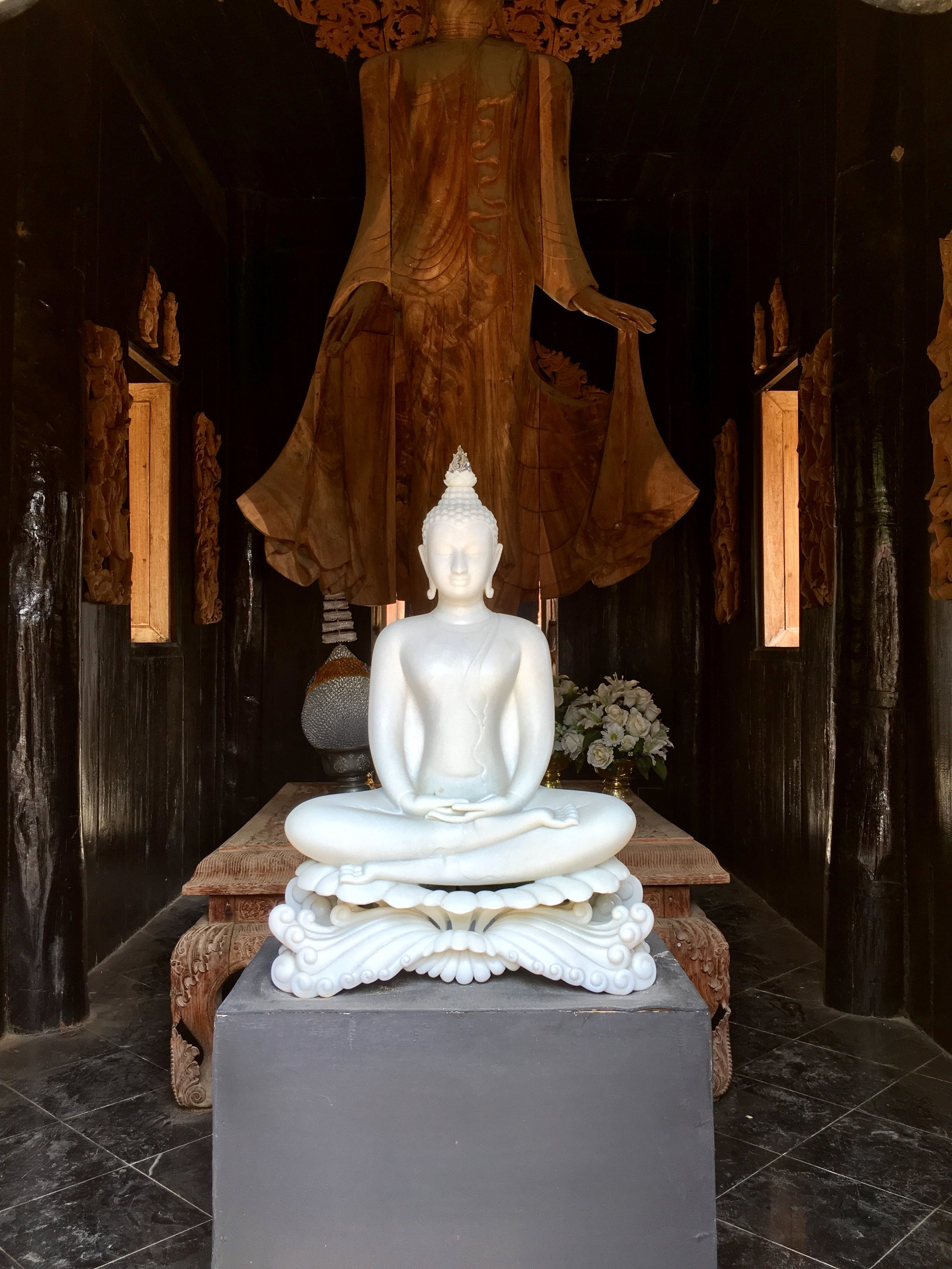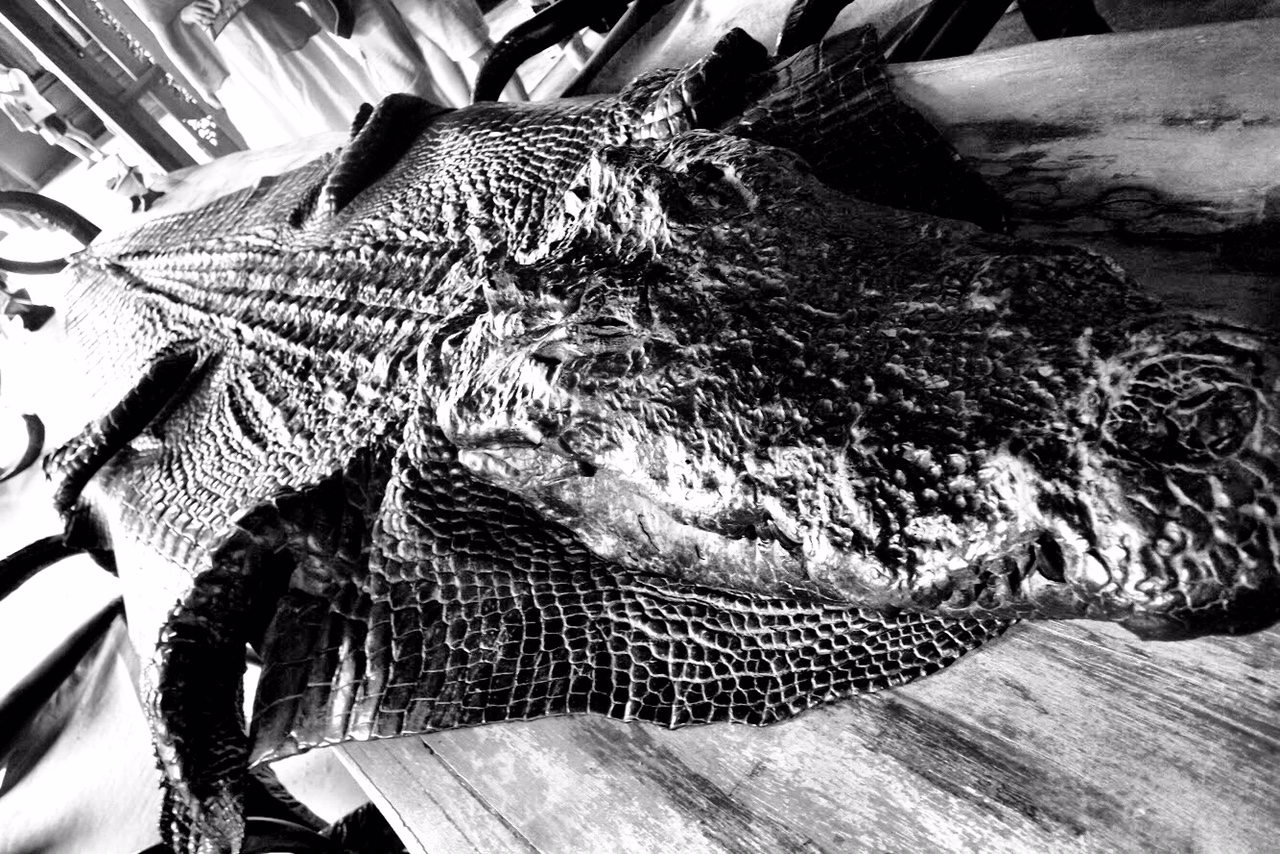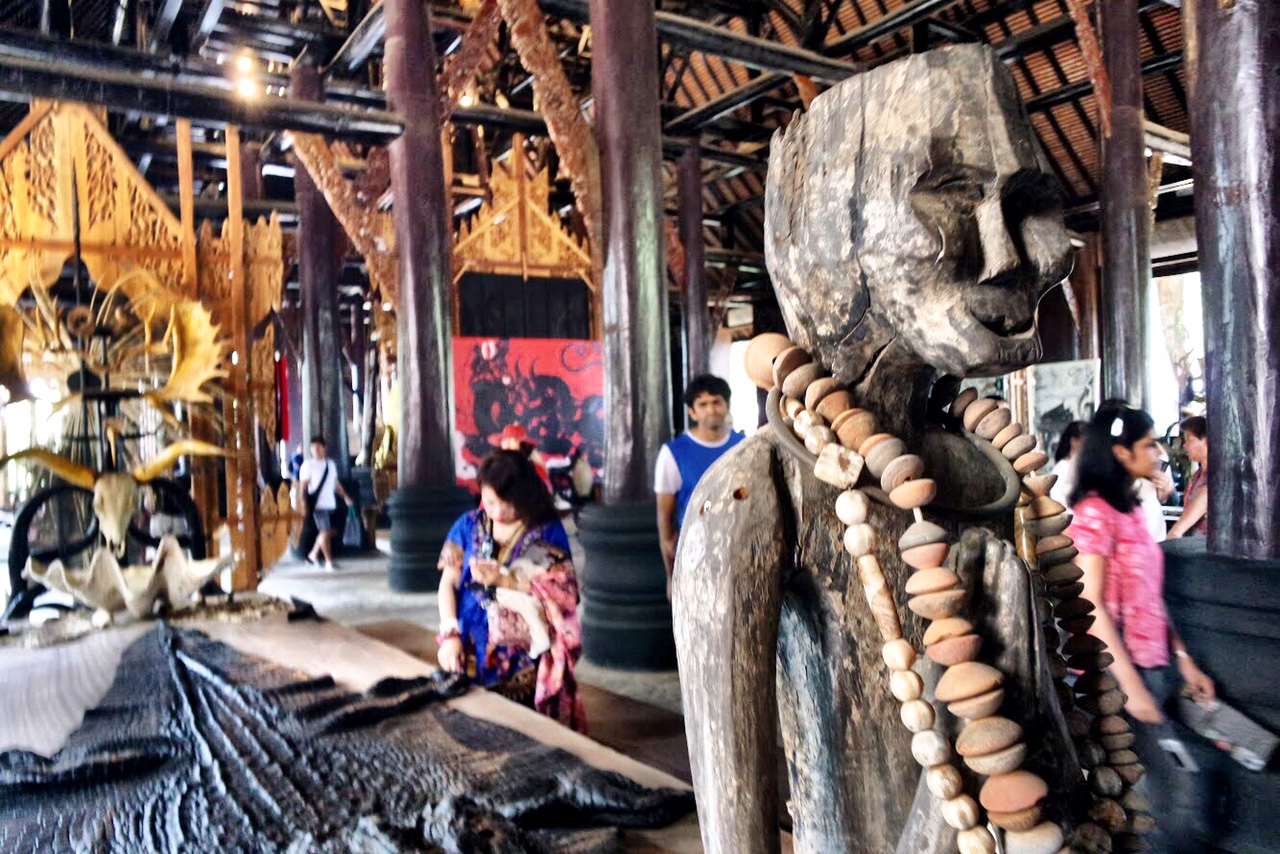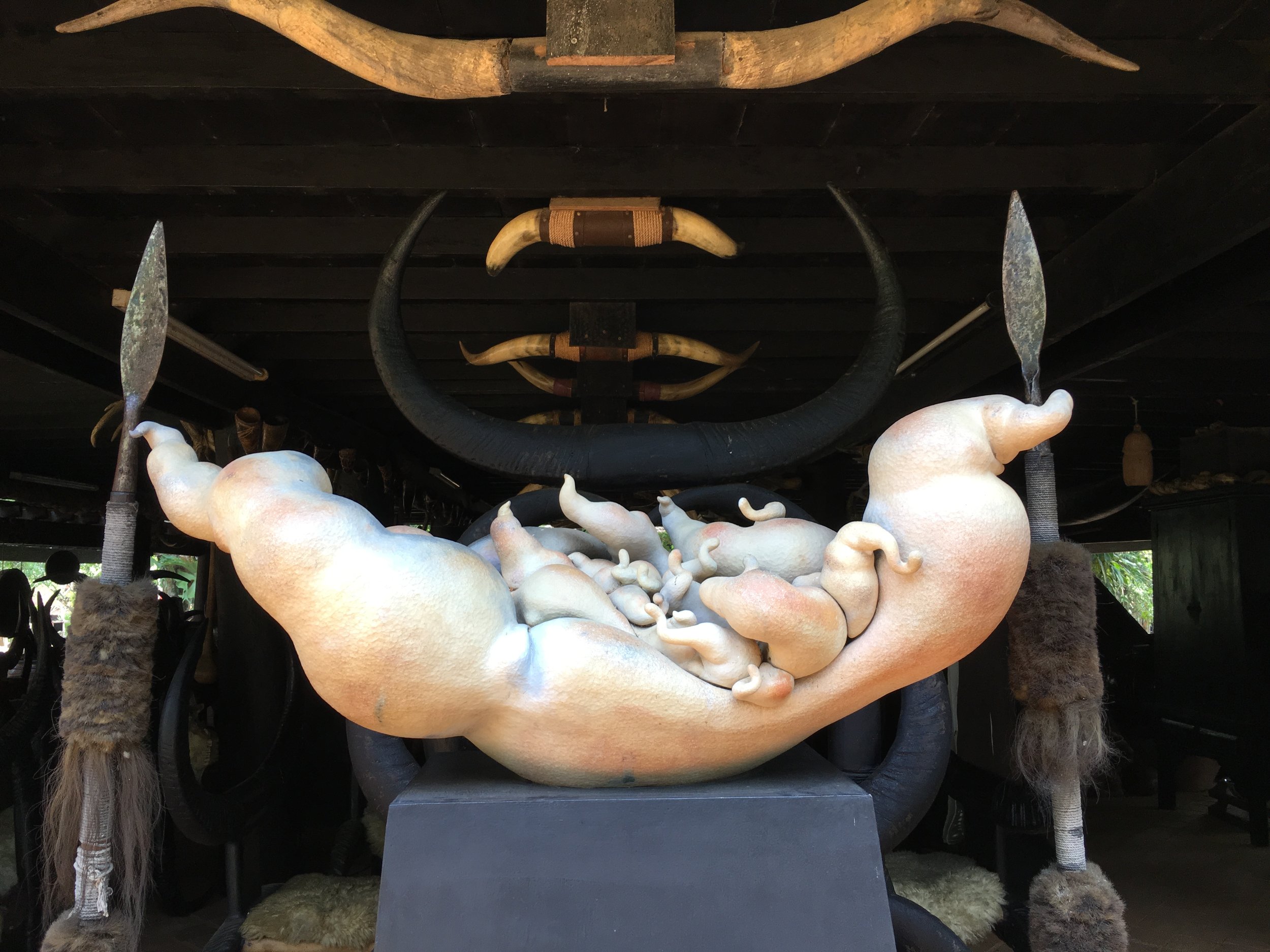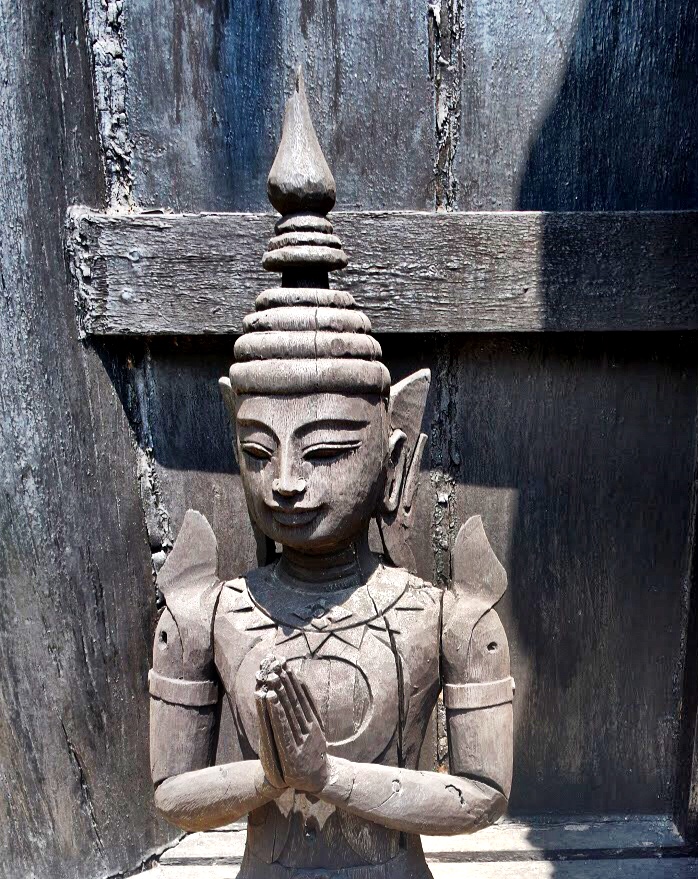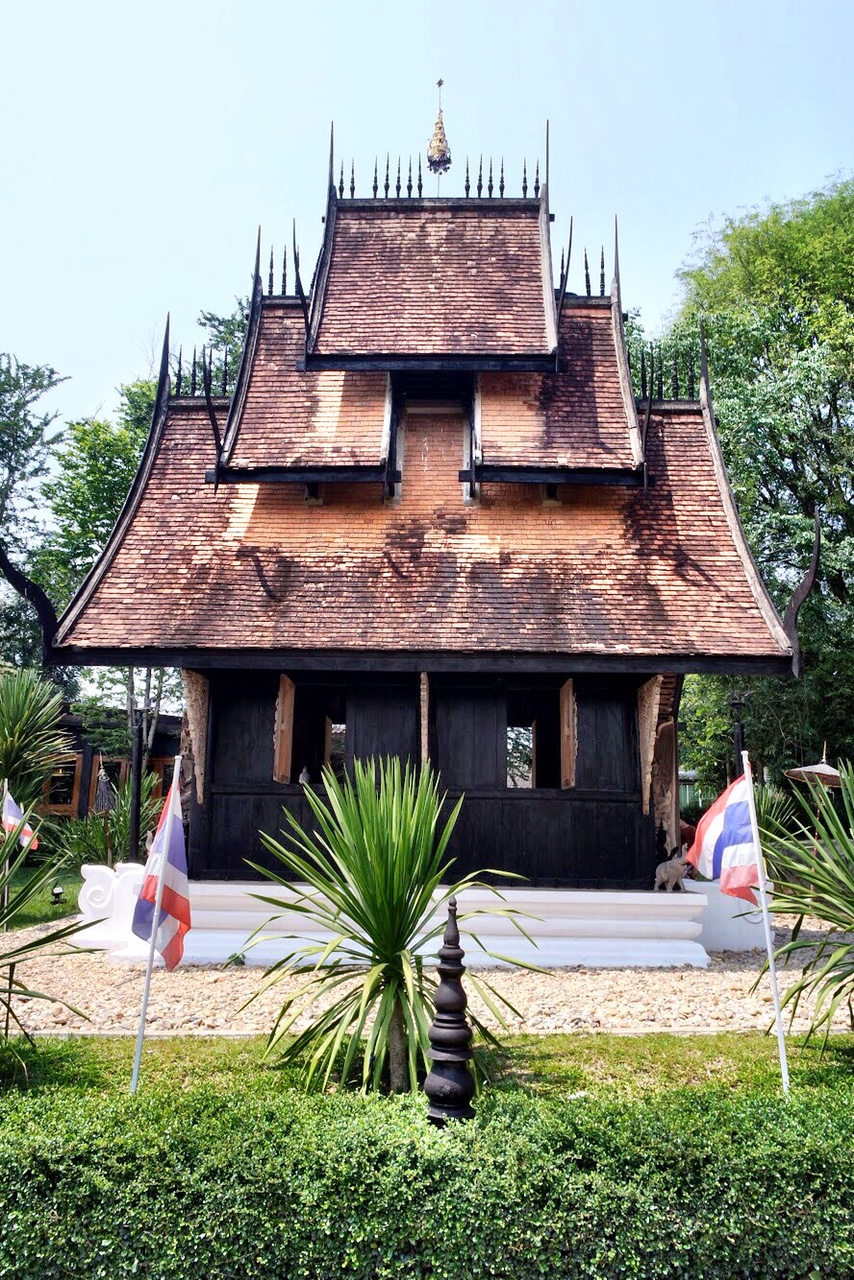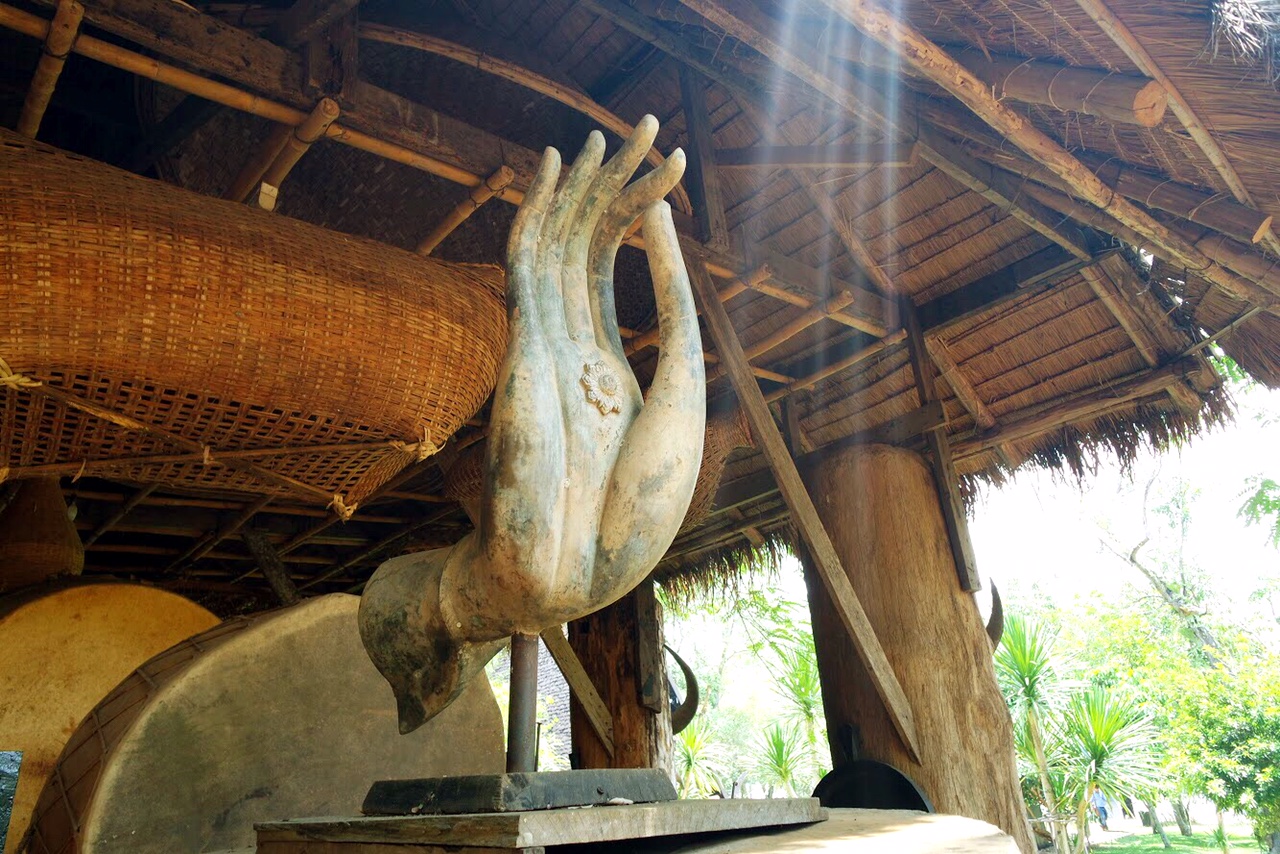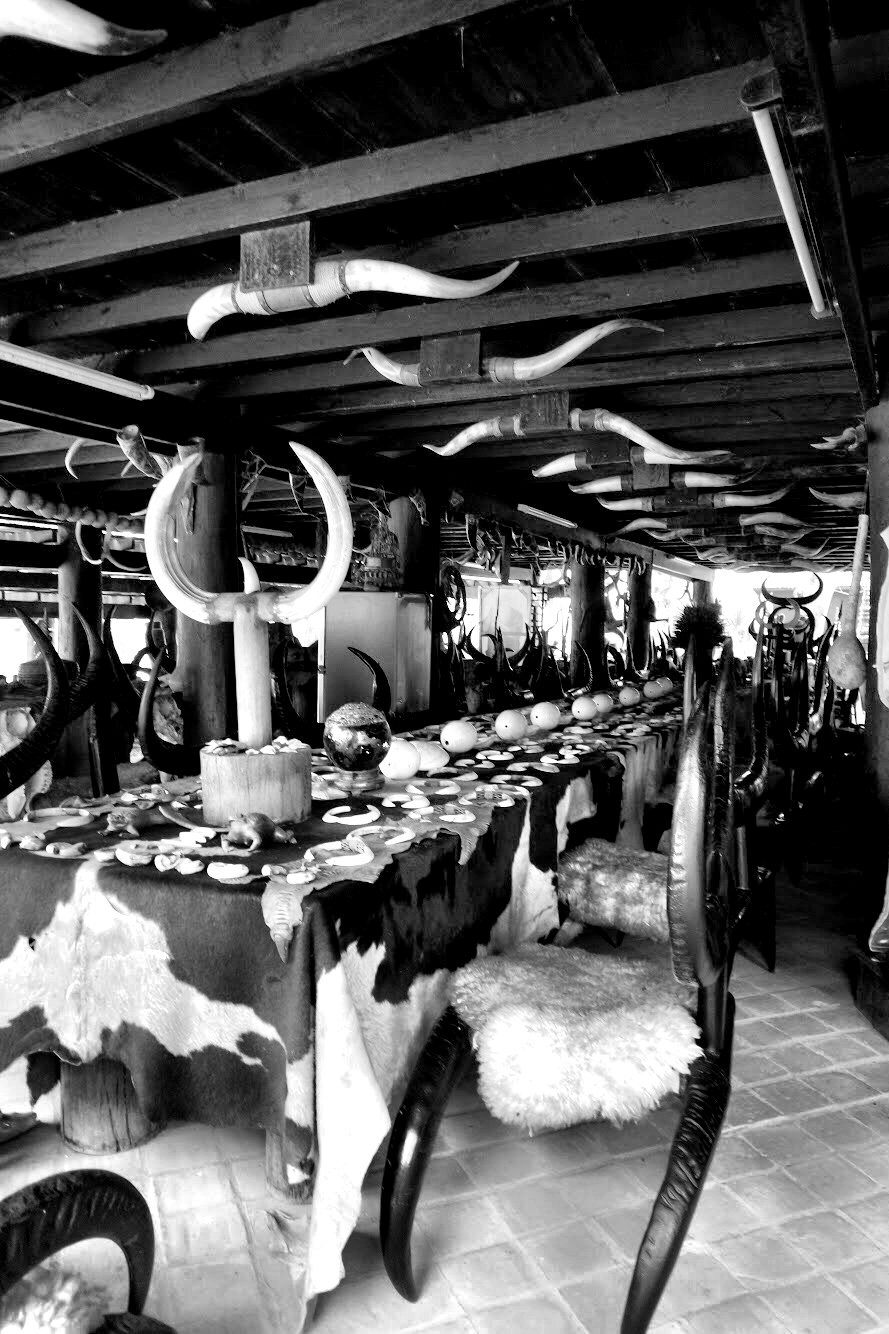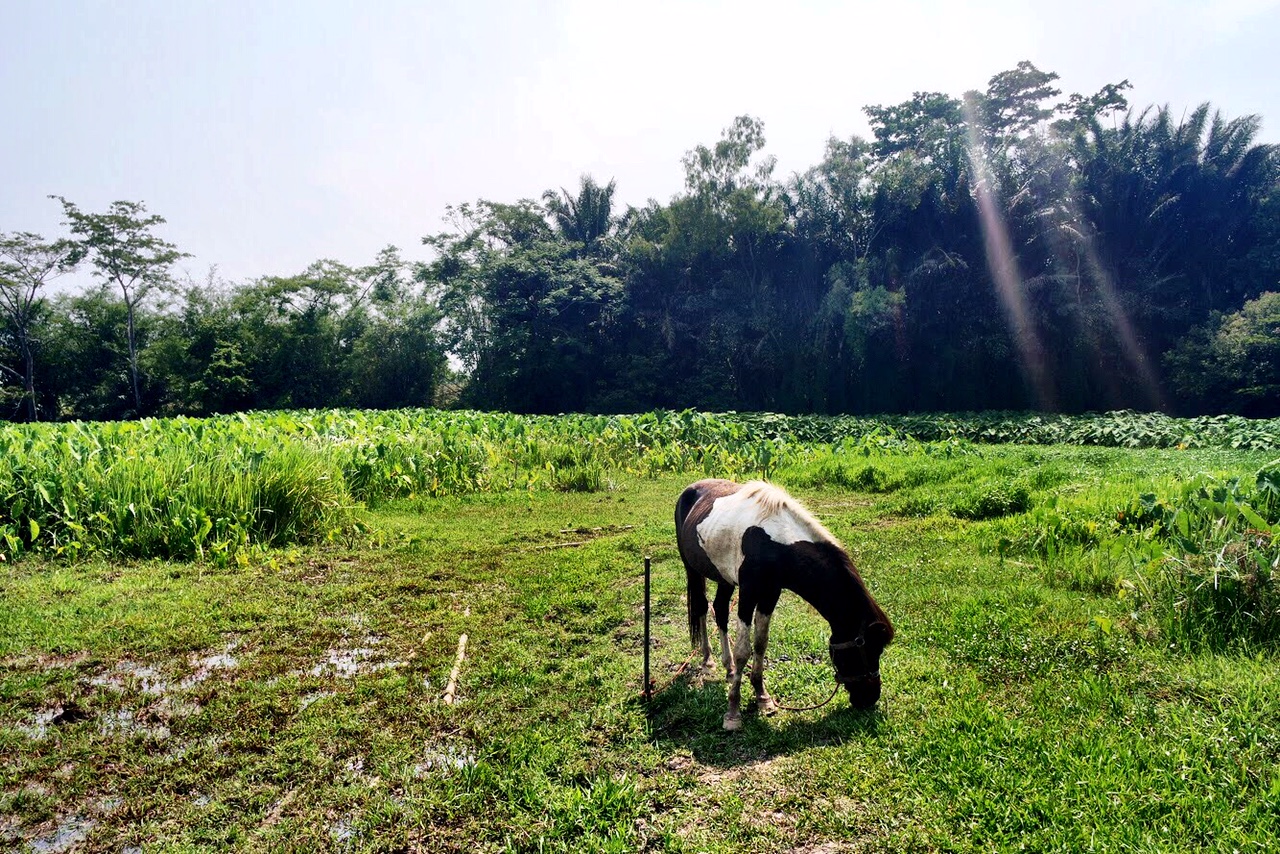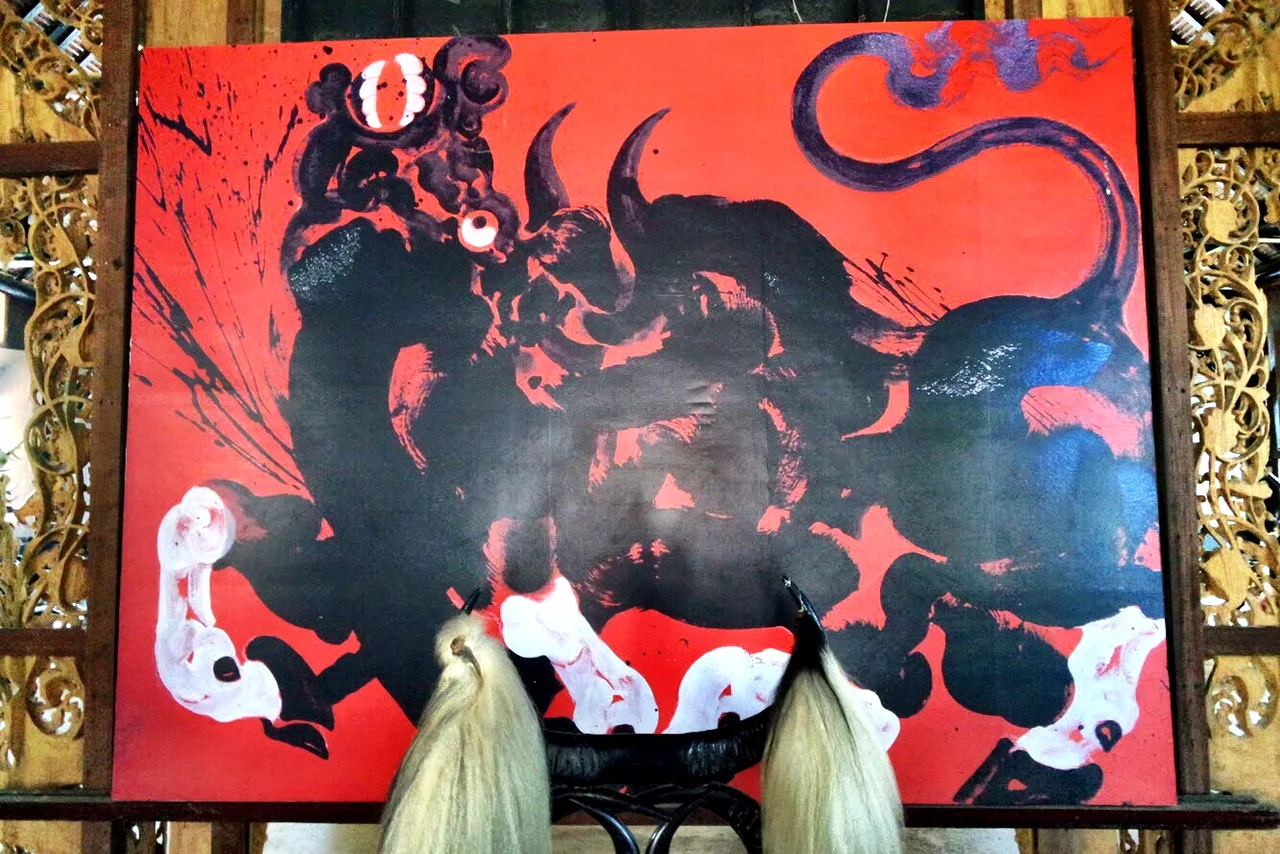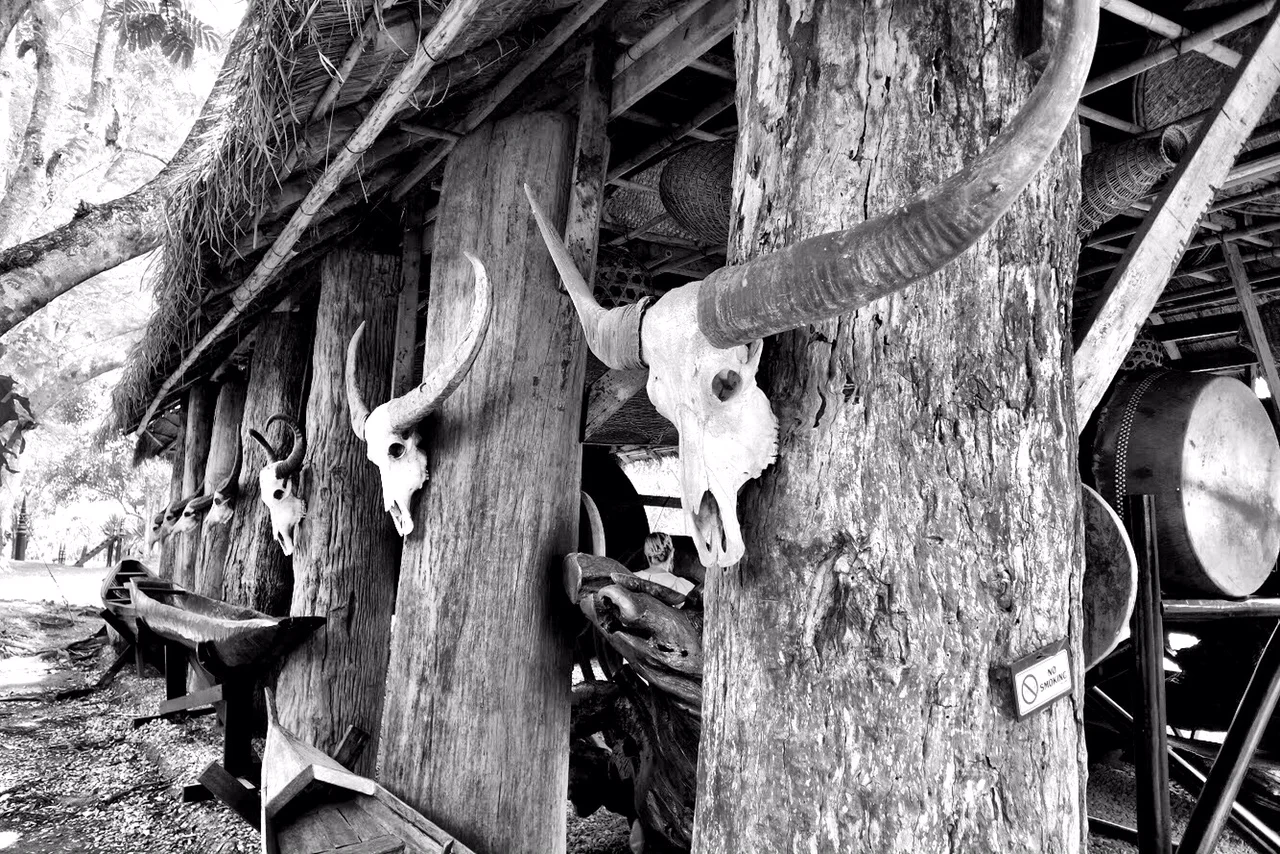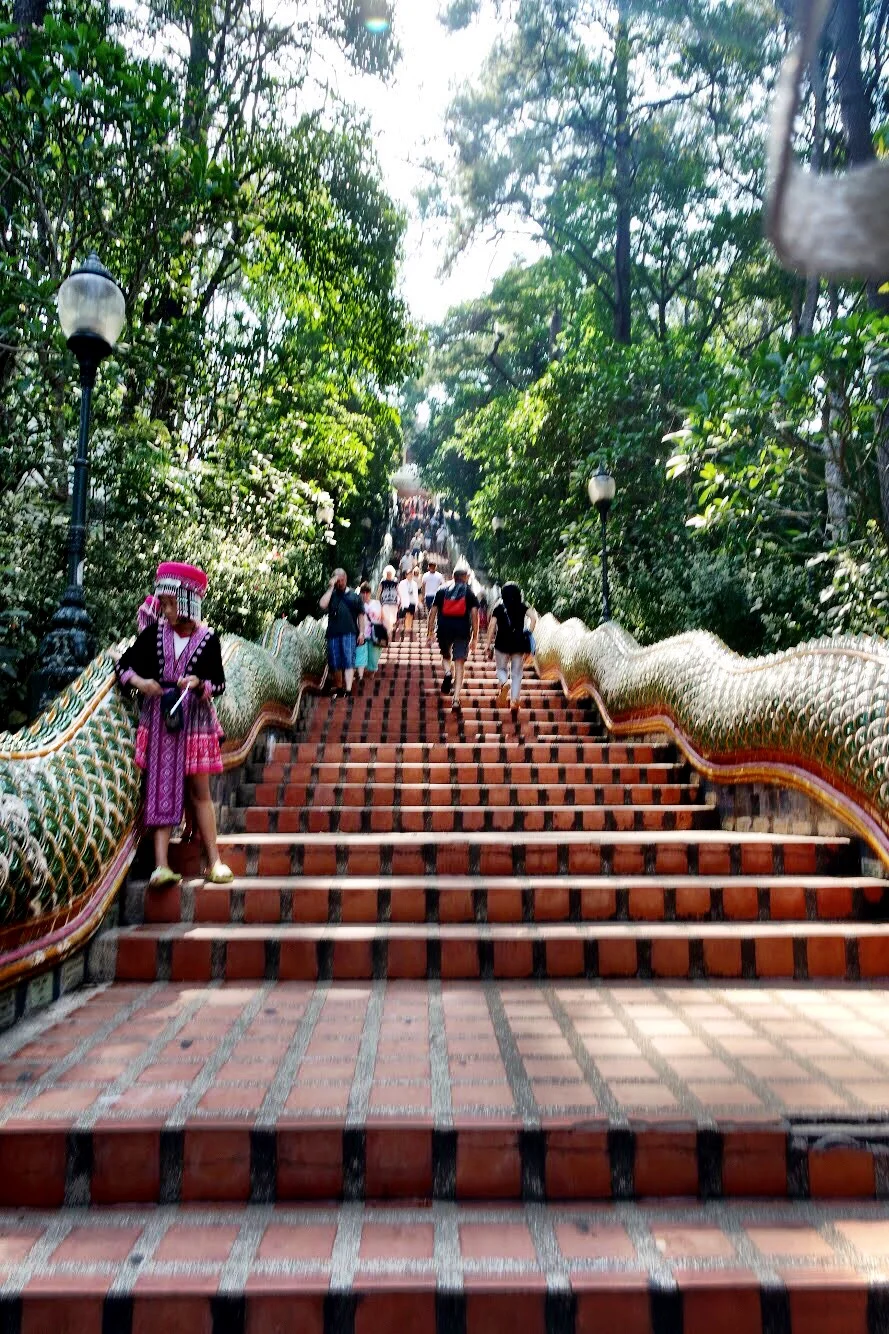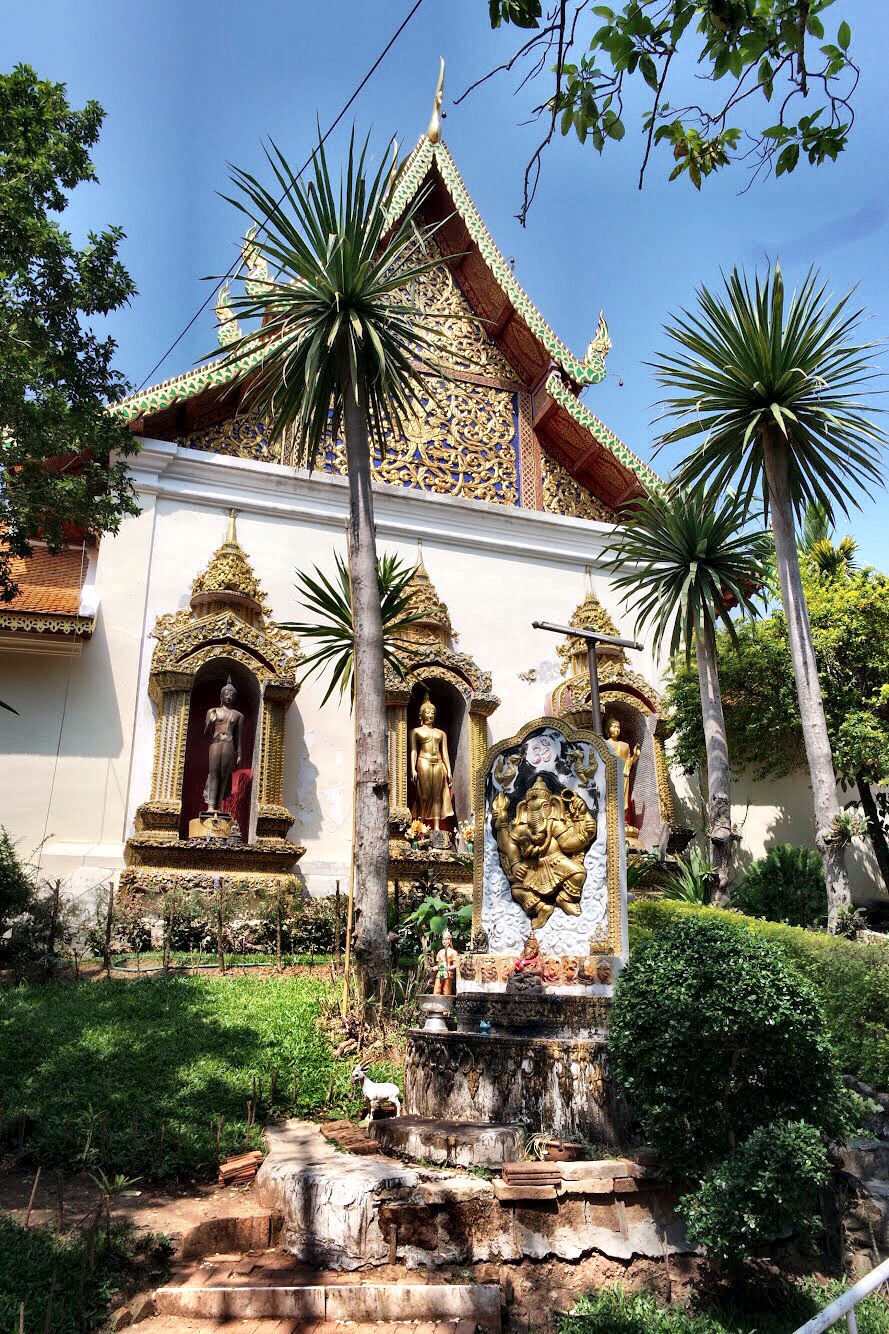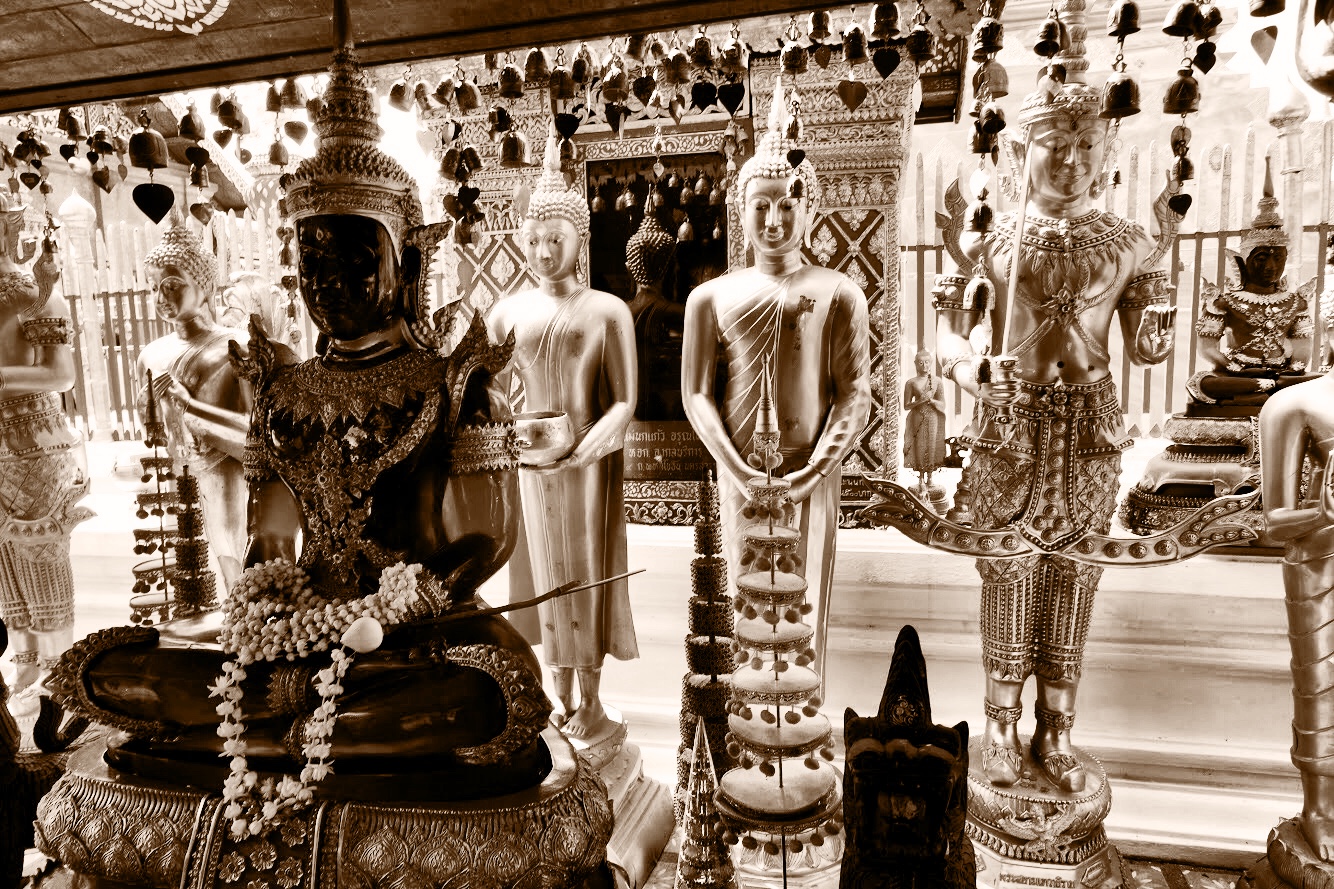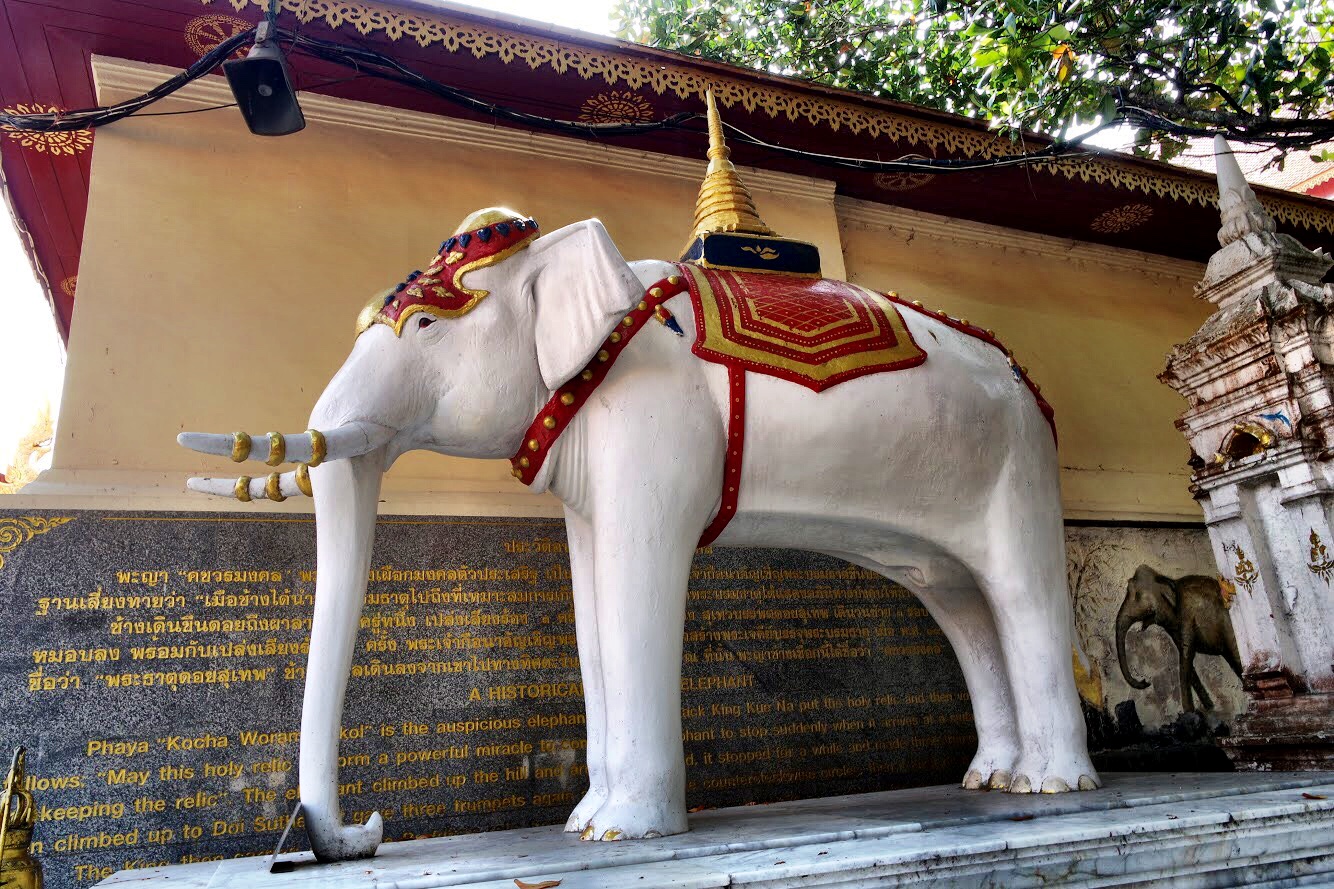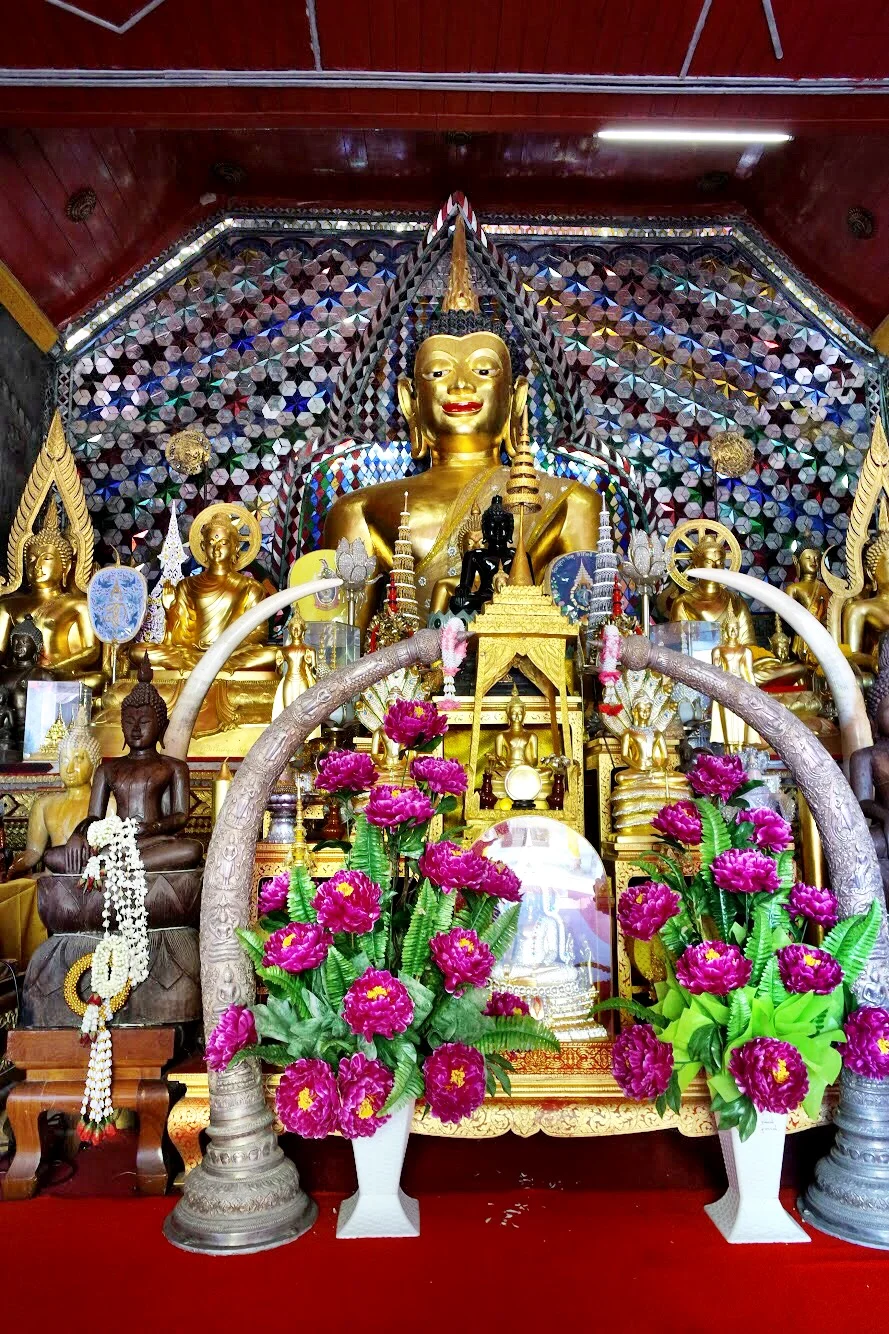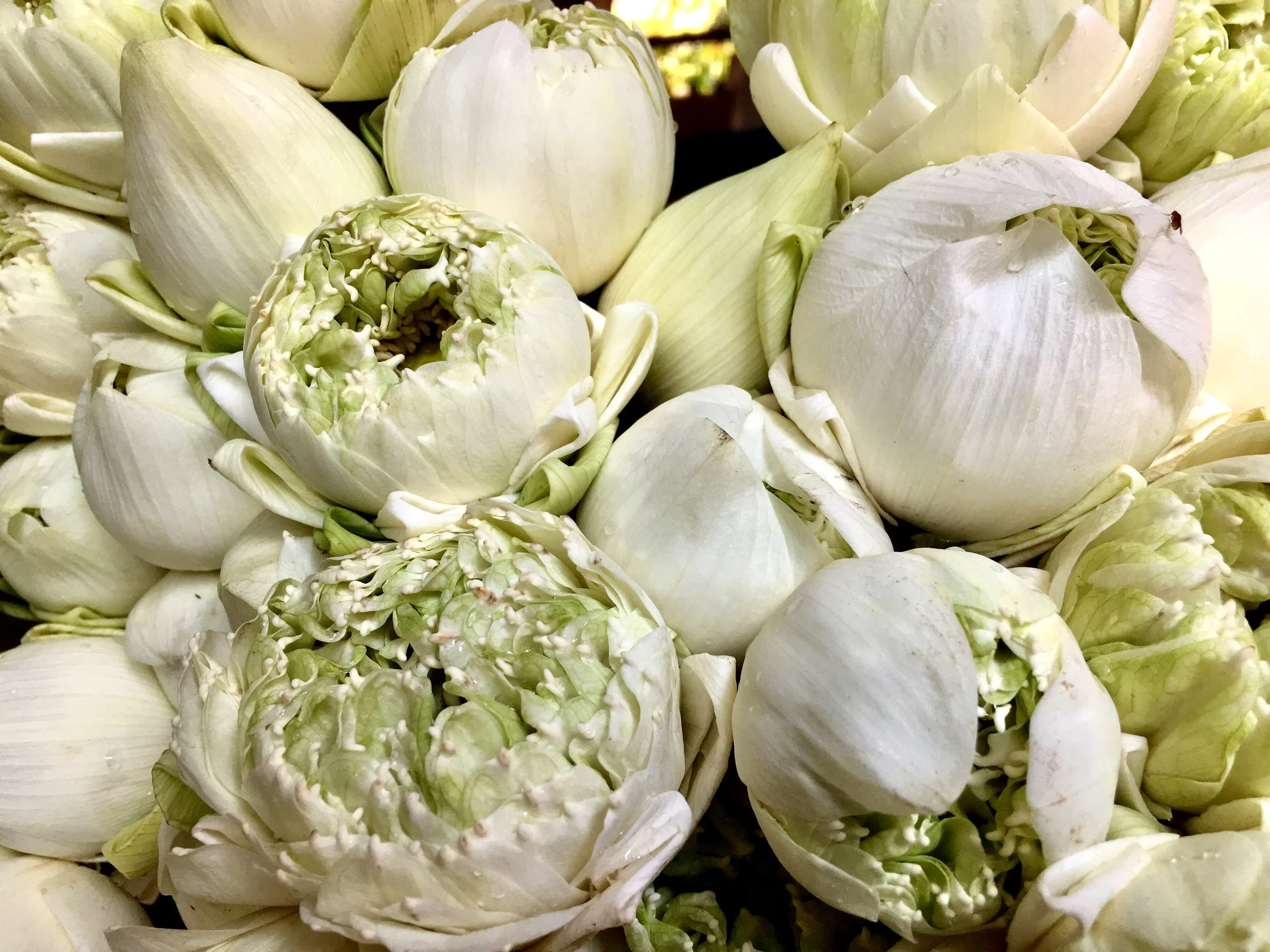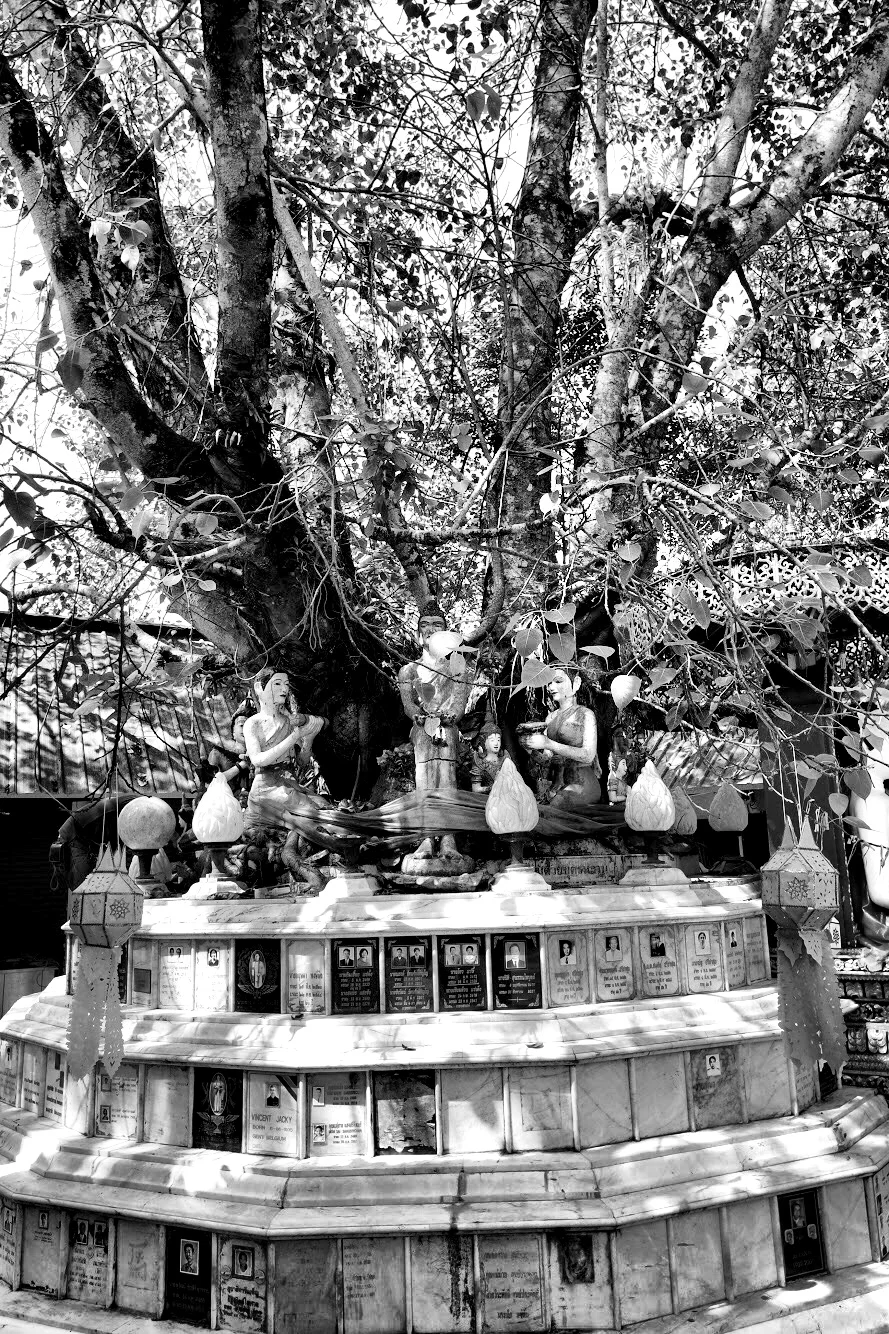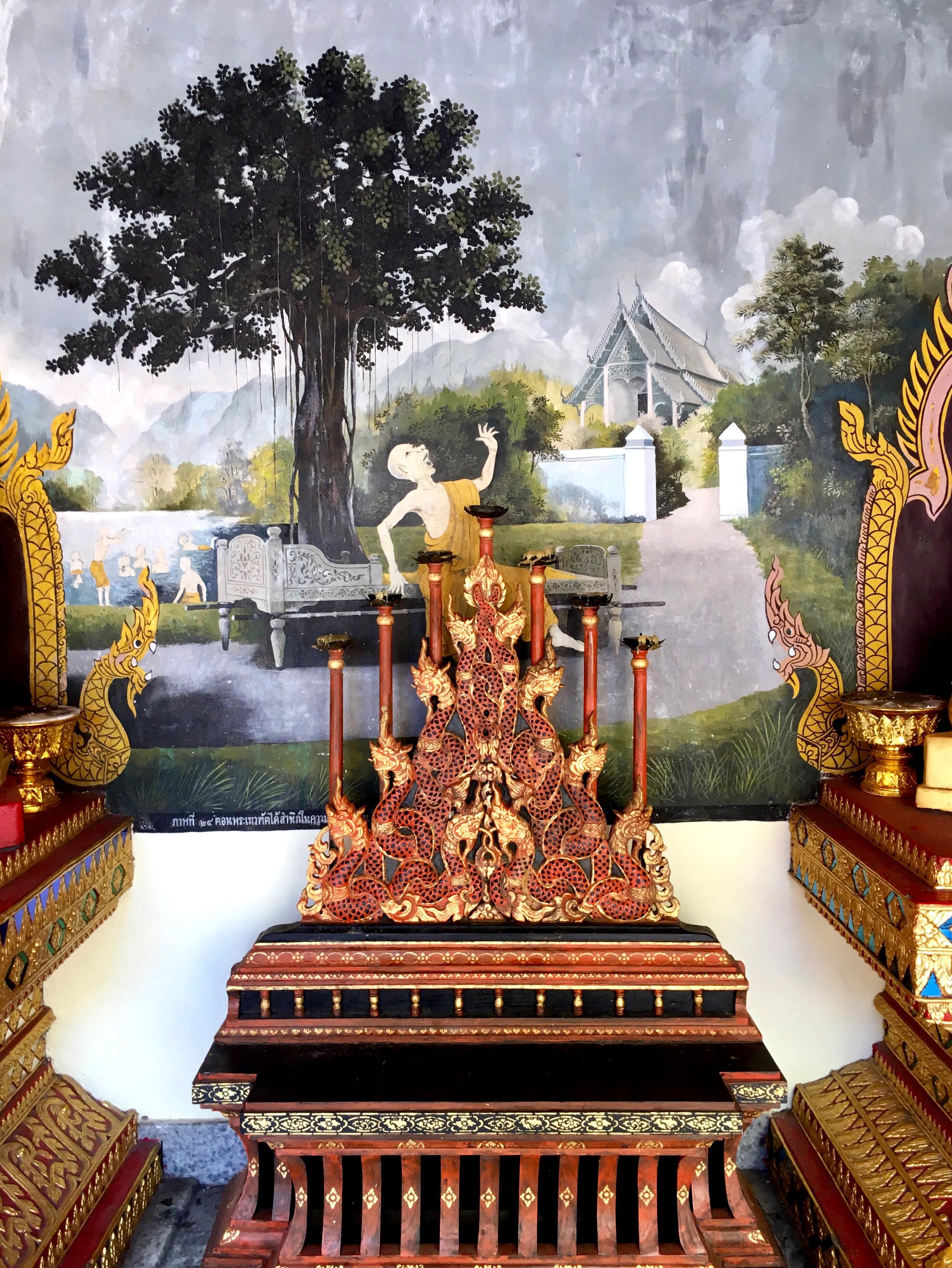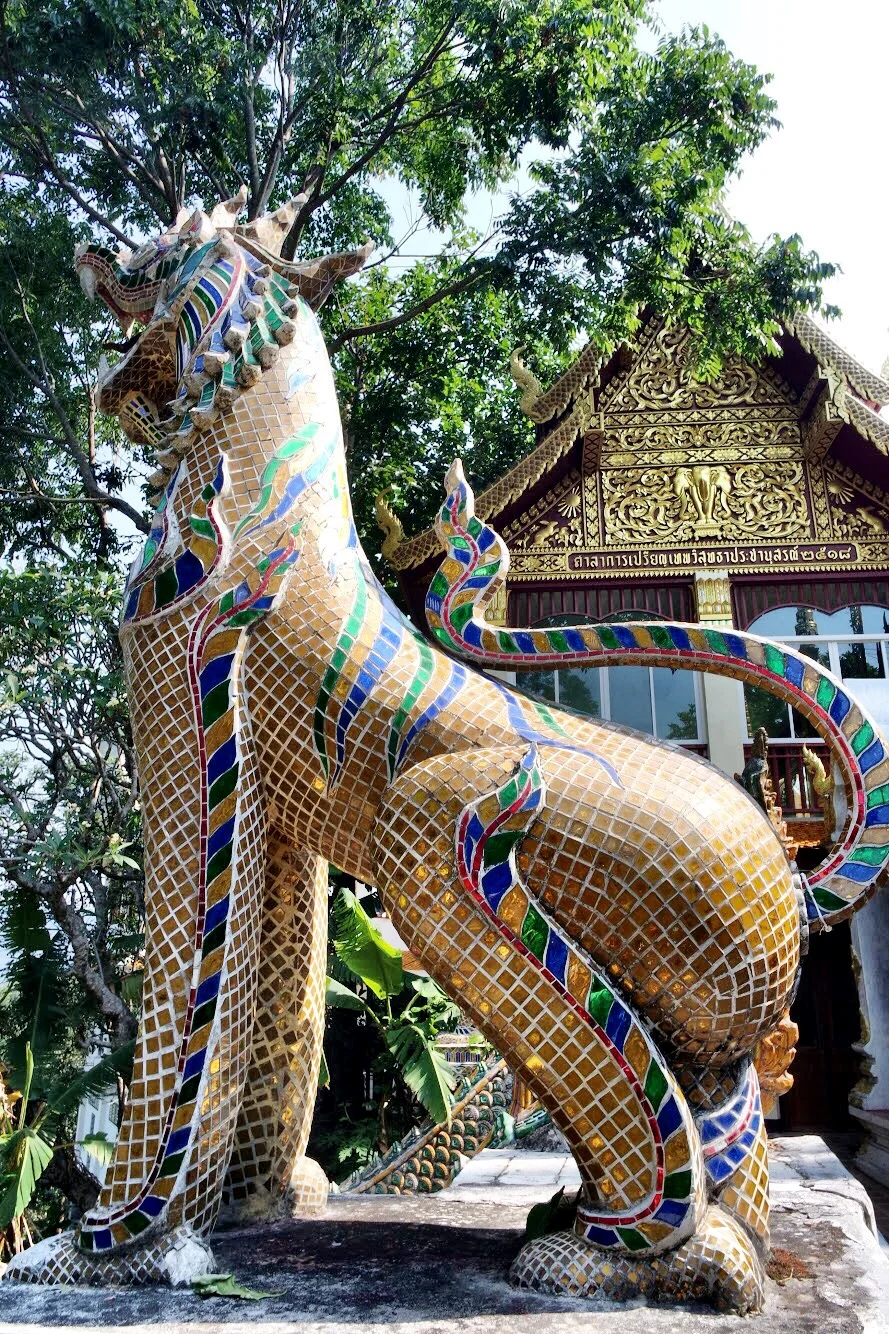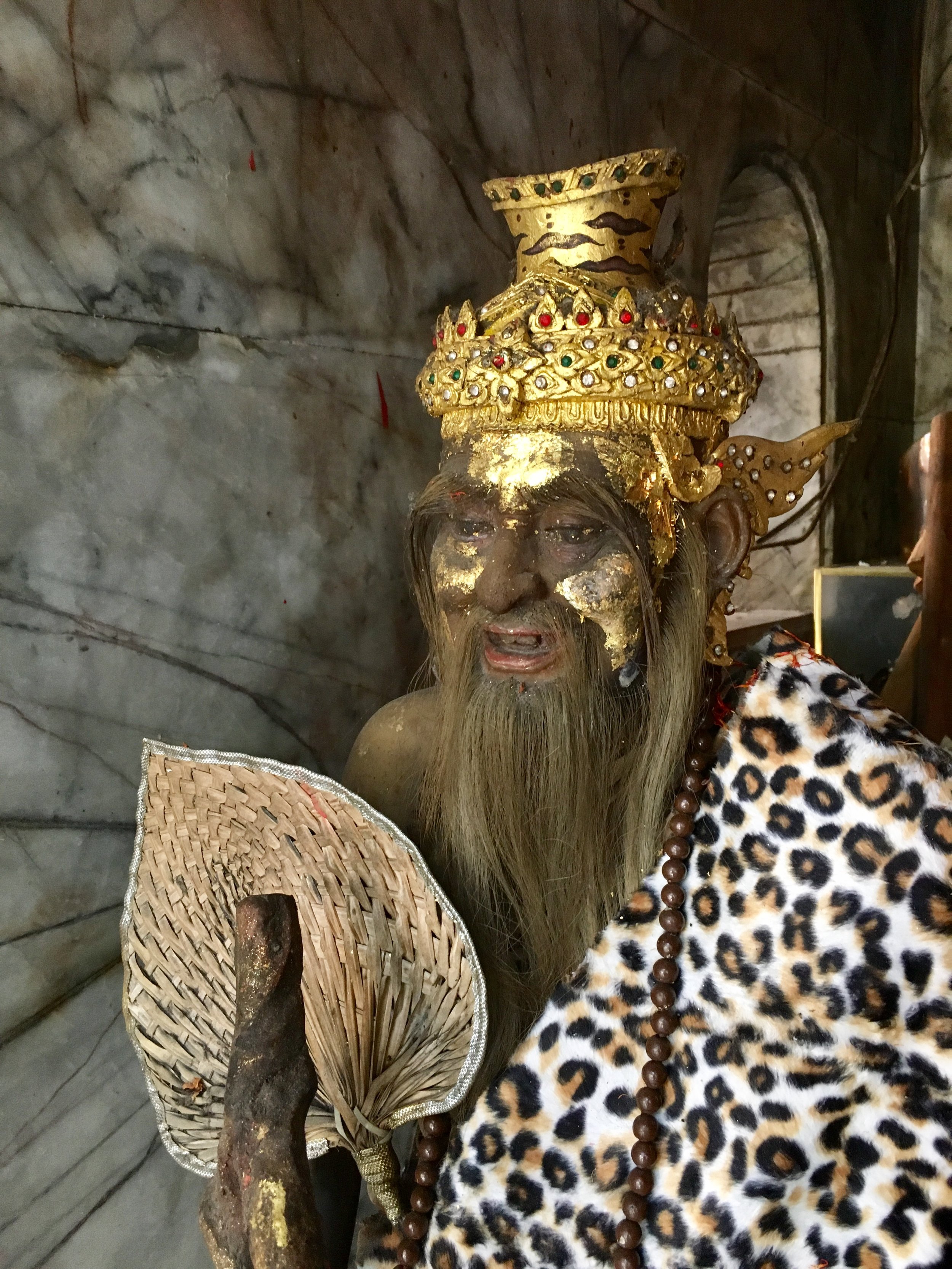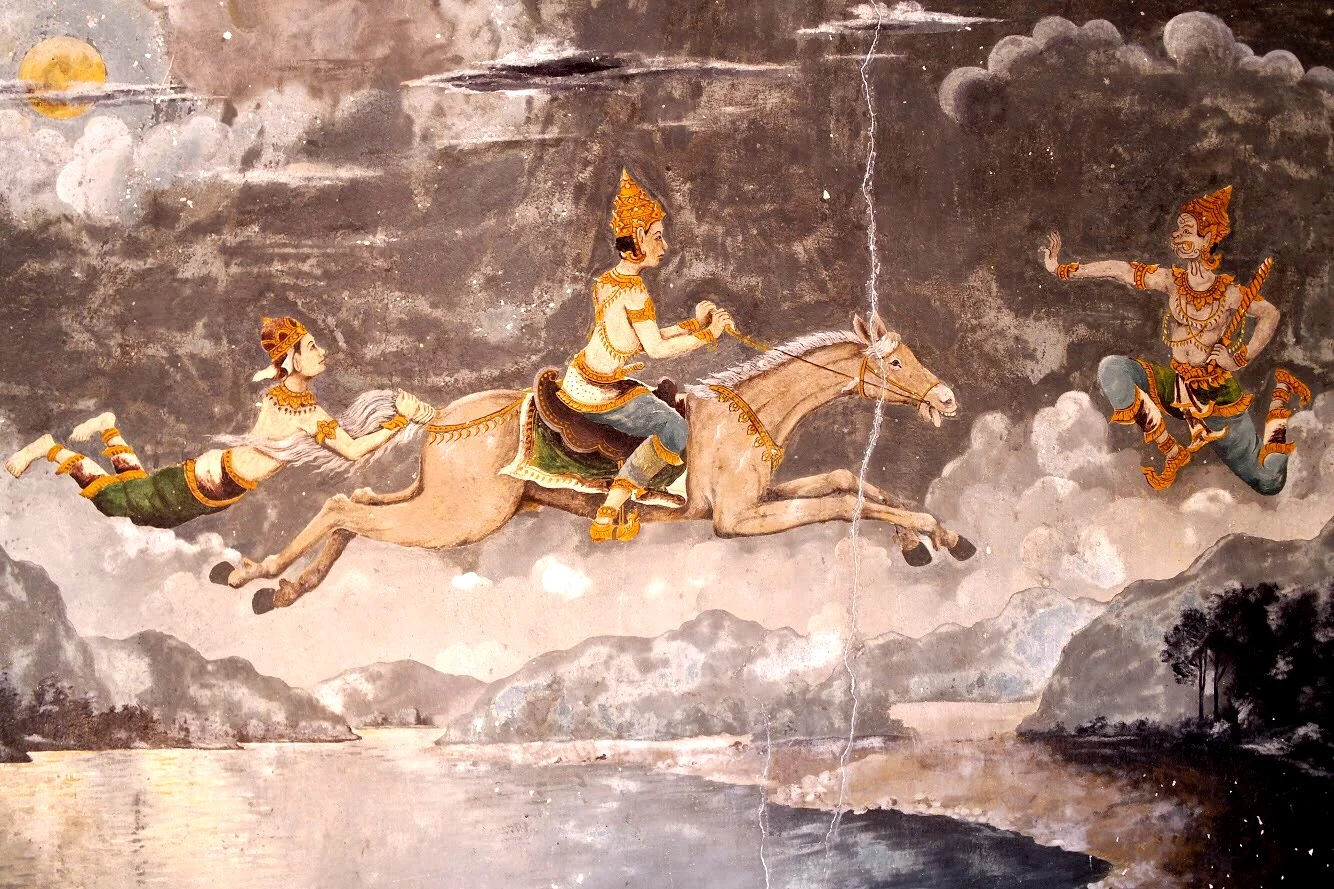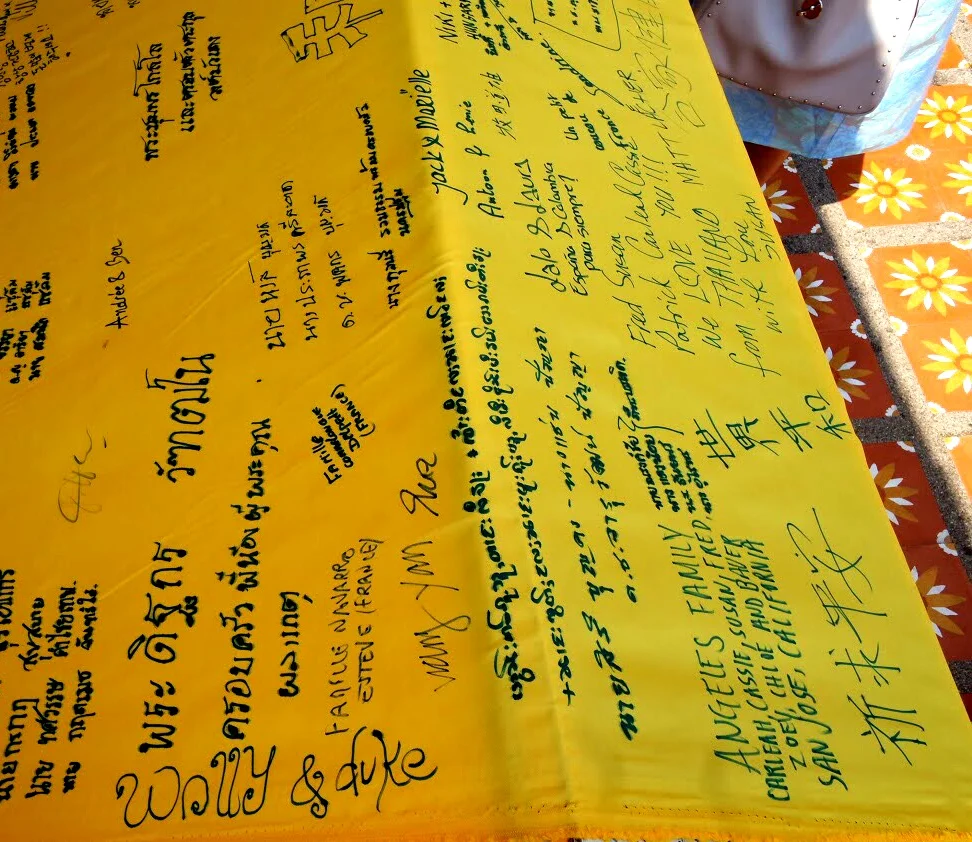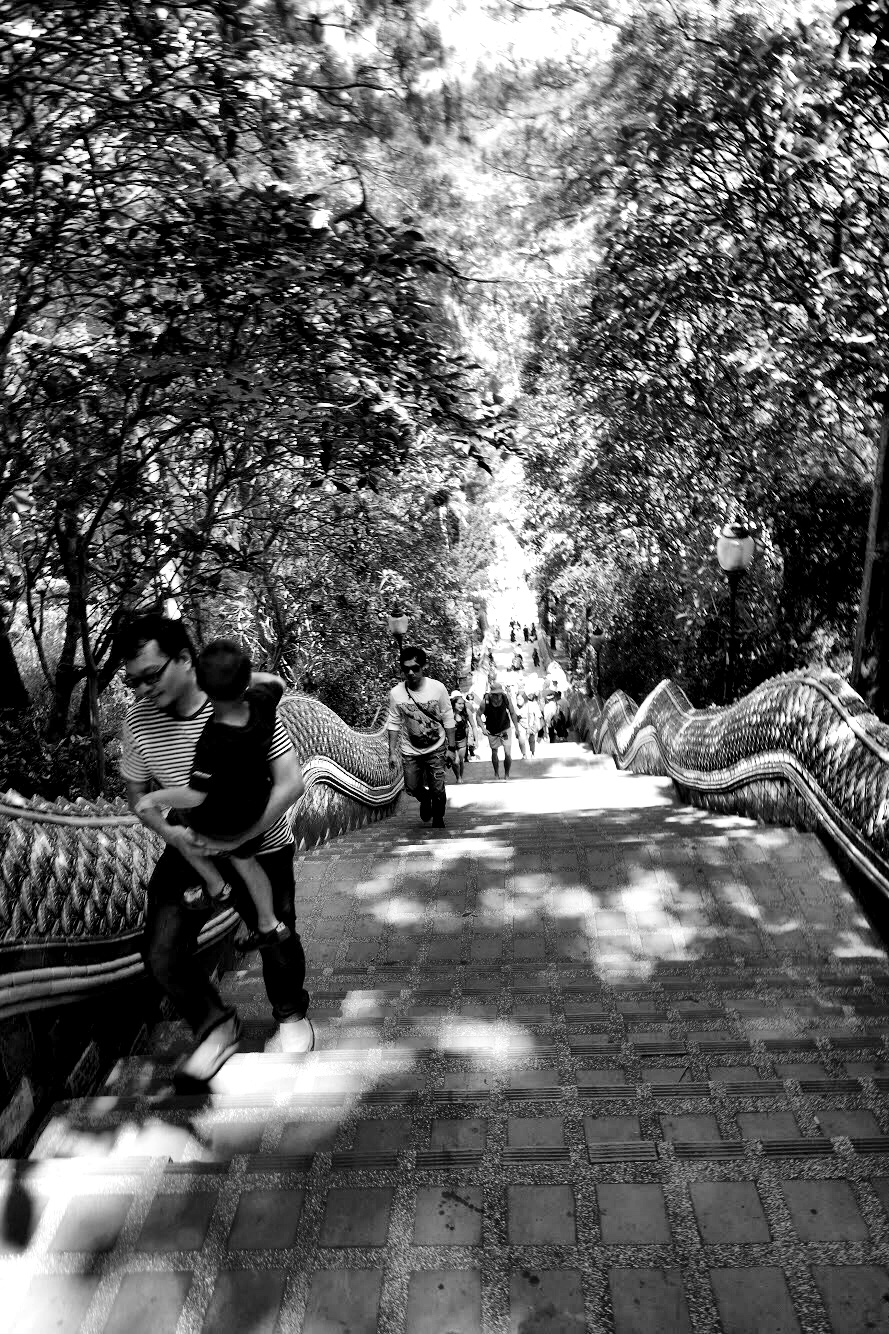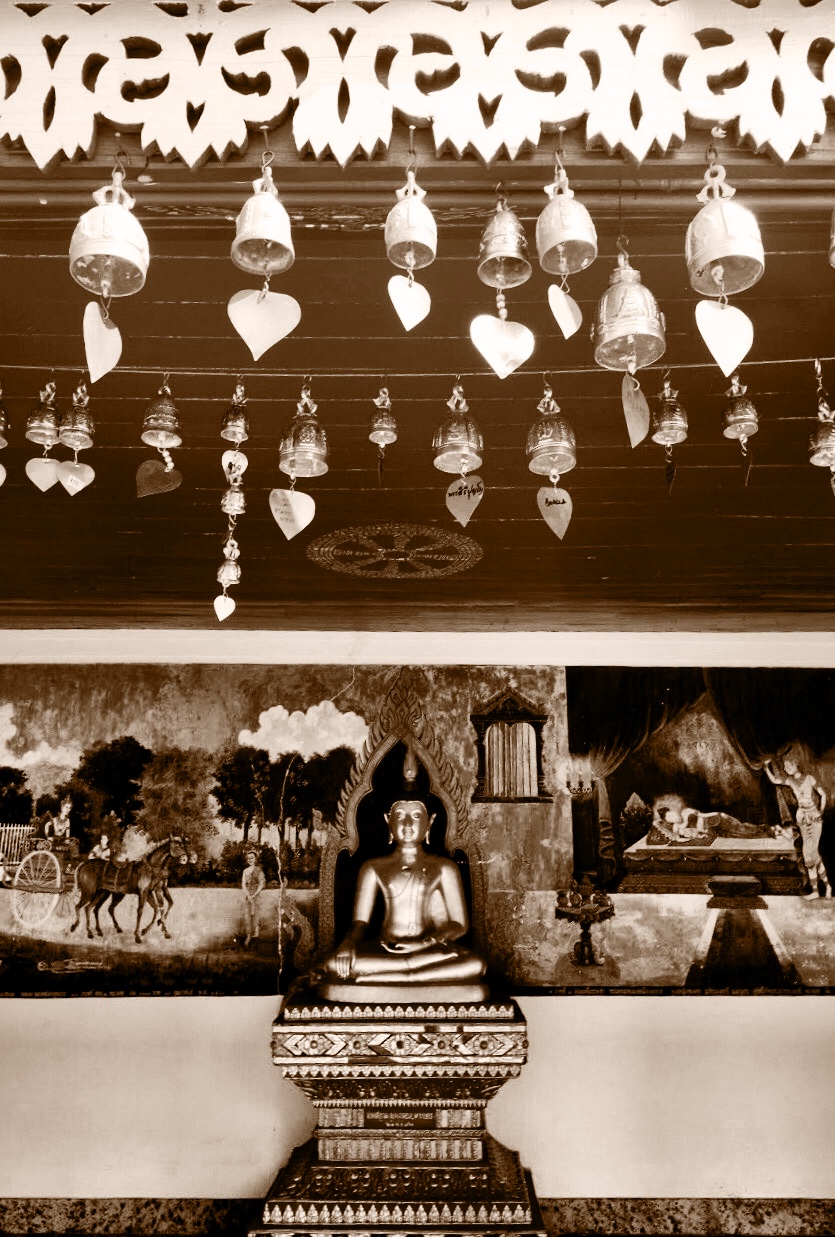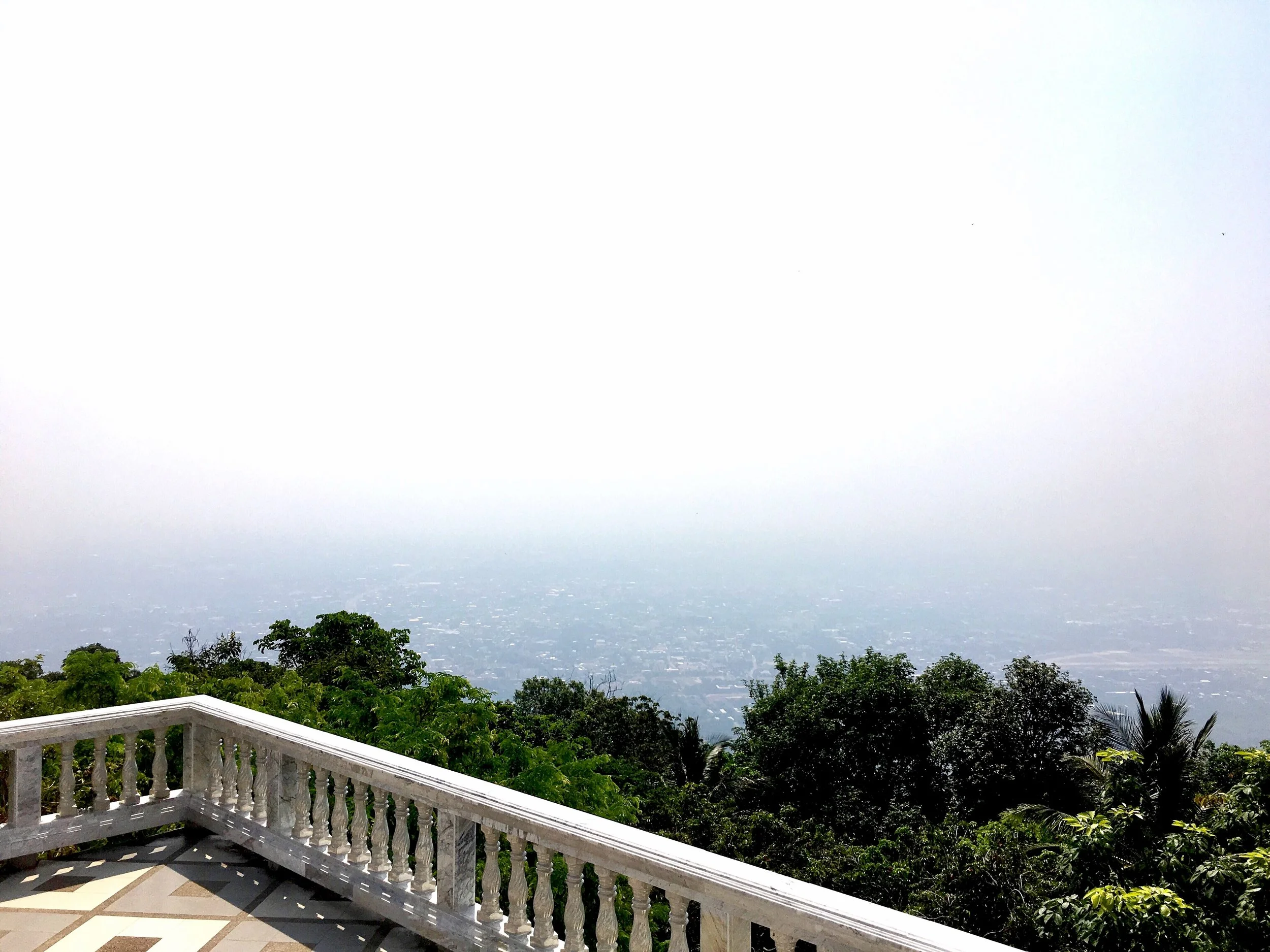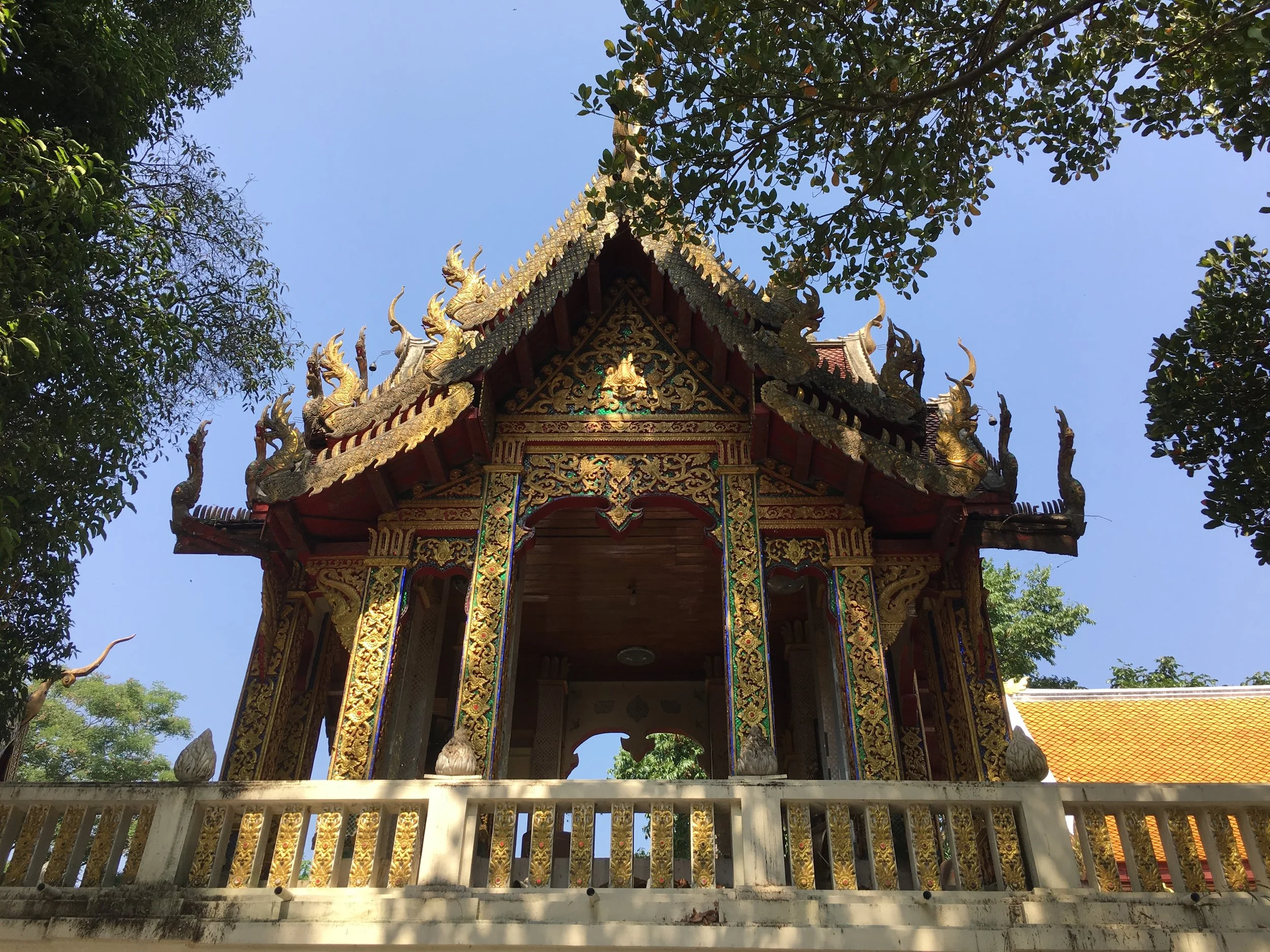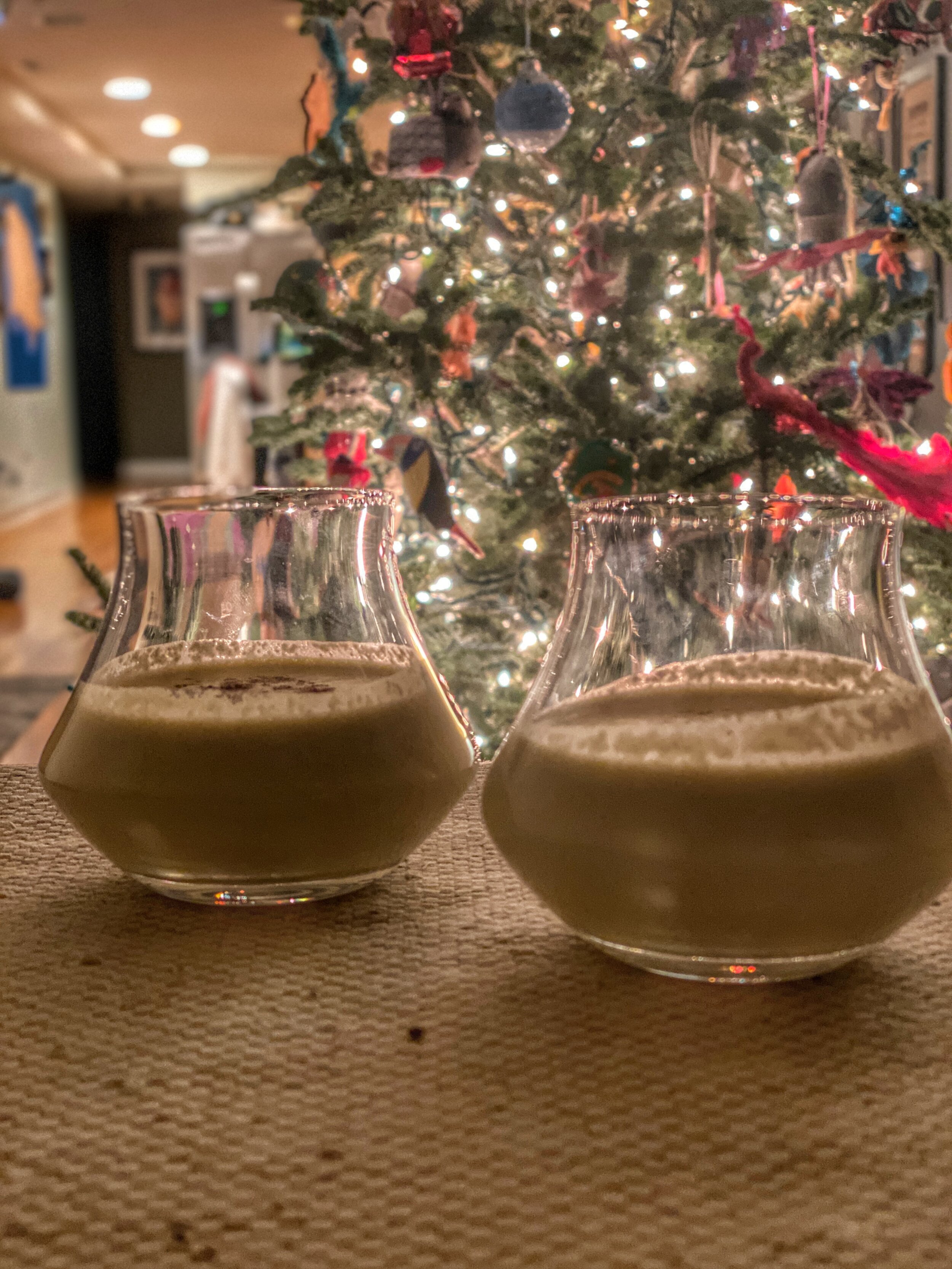Take a day trip from Chiang Mai, Thailand to this national park to see the Vachiratharn Waterfall and King and Queen Pagodas.
No trip to Doi Inthanon National Park is complete without visiting the modern King and Queen Pagodas atop the mountain
Known as “the Roof of Thailand,” Doi Inthanon is the country’s highest peak at 8,415 feet above sea level. It’s also part of the Himalayan mountain range (the world’s largest), extending from Bhutan through Nepal and Myanmar to Northern Thailand. Situated in the Chom Thong District of Chiang Mai Province, Doi Inthanon National Park includes majestic waterfalls, a diversity of forest plants and countless species of mammals and birds. The peak of the mountain is punctuated with modern twin pagodas.
“The cooling spray of mist is an excellent way to cool off, and if you’re lucky you might catch a monk taking a selfie (#monkie?).”
Plus it’s a mere 36 miles west of the tourist mecca of Chiang Mai via Highway 107. It’s not at the top of our day trip list (if you can only take one, head to Chiang Rai instead), but you can spend a fun day exploring this park.
The spiritual heart of Doi Inthanon is King Inthawichayanon, the last ruler of Chiang Mai, whose passion project was the preservation of Thailand’s forests for future generations. When he passed away in November 1897, his ashes were interred within the park and the forest was renamed Doi Inthanon, a more manageable shortening of his name.
Here are 6 things to do on a trip to the park in a recommended order:
TLC be damned! Wally and Duke did go chasing waterfalls
1. Chase Waterfalls
The park has several magnificent waterfalls. One of them, Vachiratharn Waterfall, is located on the lower slopes of Doi Inthanon. What’s nice is that it's reached by a short, easy trail from a parking area, so you don’t have to hike to it.
Stop by the Vachiratharn Waterfall — no hiking necessary
There’s a wooden observation deck where you can view the power of the water plummeting over the edge of the granite escarpment into the pool below. The cooling spray of mist is an excellent way to cool off on a hot day, and if you’re lucky you might even catch a monk taking a selfie (#monkie?) like we did.
#monkie? It’s not every day you see a monk taking a selfie
The Royal Project is an ambitious plan to get hill tribe people to have a source of income other than opium
2. Admire the Royal Agricultural Station
The Royal Project was initiated in 1979 by King Bhumibol to fight poverty and encourage rural hill tribe farmers to cultivate sustainable crops other than opium. Vast swaths of land are covered in terraced steps where the Hmong and Karen hill tribe farmers grow fruits, vegetables and flowers. The Royal Project also serves as a model center to disseminate knowledge and promote innovation.
Grab lunch near the Royal Project garden
3. Take a (Lunch) Break
The Royal Project boasts a casual al fresco restaurant offering a variety of signature and traditional fare. Wally and I sat at a table on the covered terrace overlooking a copse of banana palm trees. A tour guide at a neighboring table helped us order two Beer Chang, and we didn’t complain when they came out in giant bottles — quite refreshing after a morning spent in the sun.
We ordered one hit, roasted duck medallions with coffee glaze, and one miss, Inthanon spicy fried rice with Thai-style sour pork sausage. Neither of us have ever had pig knuckles, but we imagined this might be what they taste like. We gnawed on the gristly bone stubs, though, and put bits of fried pork rinds into the spicy veggie sauce. It's amazing what you’ll do when you're hungry. But hey, who’s complaining, when the entire meal came to $12?
Keep an eye out for the black swan in the Royal Project pond
4. Stroll Through the Gardens
After lunch you can meander through the immaculate flower garden, which features a large pond with a pair of swans, one white and one black (much less harrowing than Natalie Portman’s off-the-rails performance as a tragic ballerina).
It started raining right as we got to the pagodas atop Doi Inthanon
5. Head for The Hills and See the Pagodas
The Royal Thai Air Force erected the modern tiered pagodas at the summit to commemorate the 60th birthdays of the late King Bhumibol and Queen Sirikit. Because it was raining, we pretty much had the site to ourselves and were free to explore. Each pagoda has a flight of steps leading up to it and a covered escalator, which was not working on our visit but provided some shelter from the rain. Thankfully, we had remembered to bring umbrellas with us, though we still got soaked while exploring the gardens outside of the King Pagoda.
The Buddha inside the King Pagoda sits in a teaching position
King Pagoda
The octagonal bell-shaped ochre-and-gold-hued pagoda, named Phra Mahathat Naphamethanidon, stands 197 feet tall and is comprised of three distinct levels. These symbolize the main principles of Buddhism: karma, reincarnation and impermanence.
The multicolored stonework bas reliefs outside the King Pagoda tell the story of the Buddha
Inside is a Buddha image seated in the Vitarka Mudra position, symbolic of the Enlightened One teaching his disciples. The circle formed by the thumb and index finger of the left hand indicates the constant flow of energy — there is no beginning or end, only perfection.
Not sure if Buddhists believe in Hell — but this sure doesn’t look like a pleasant spot
Stone panels inside and outside of the pagoda depict important events from the life of the Buddha. The tilework reliefs encircling the King Pagoda have amazing depictions of mythical creatures, including the giant eagle Garuda fighting the snakelike Naga.
Hey, Garuda! Back off of Naga! The eagle god and giant snake are seen battling in this carving
Explore the quaint park with a pond behind the Queen Pagoda
Queen Pagoda
The 12-sided lavender pagoda, named Phra Mahathat Naphapholphumisiri, is crowned with a golden lotus bud and is 16 feet shorter than the king’s, indicating that the queen is 5 years younger (not sure how that math adds up).
The Buddha inside the Queen Pagoda stands in a posture of reflexion
Inside, the Buddha image stands in the Pang Ram Pueng posture, symbolic of reflection. If you have visited a wat or temple in Thailand, you may have noticed depictions of the Buddha standing, sitting or reclining. Some of these represent the days of the week, and the Pang Ram Pueng is known as the Friday Buddha. Devotees who were born on this day pay respect to this image, which incidentally marks the day Queen Sirikit was born.
There are so many crazy carvings to check out at these pagodas, including this one of a female being with frightening head
The tiled mosaics surrounding the pagoda illustrate stories relating to the lives of famous bhikkhunis, ordained female followers of the Buddha.
Three ladies go for a swim in this cool bas relief at the pagodas atop Doi Inthanon
Mae Ya Waterall is farther afield but worth visiting
6. Visit Mother Ya
Nestled amongst the spectacular backdrop of a lush, serene forest, Mae Ya Waterfall is located on the other side of the mountain, about seven miles from Chom Thong Village within Doi Inthanon National Park. The water flows from the Mae Ya River, cascading over a series of tiers as it plunges from an impressive 853-foot-high cliff. We arrived just before what we refer to as the magic hour, when sunlight casts a diffused golden hue, an hour or so before sunset.
Wally takes one of his famous jumping shots at the edge of the Mae Ya River
You’ll notice a tree wrapped with colorful ribbons with dresses in front of it. That’s a shrine to Phi Nang Ta-khian, a tree spirit. –Duke
Duke at Mae Ya Waterfall
บ้านหลวง ซอย2 Ban Luang
Chom Thong District
Chang Wat Chiang Mai 50160, Thailand





